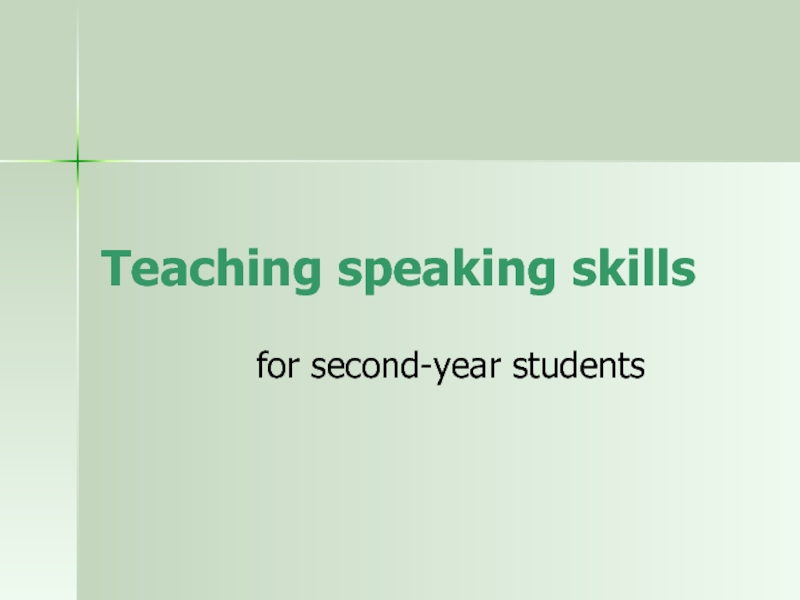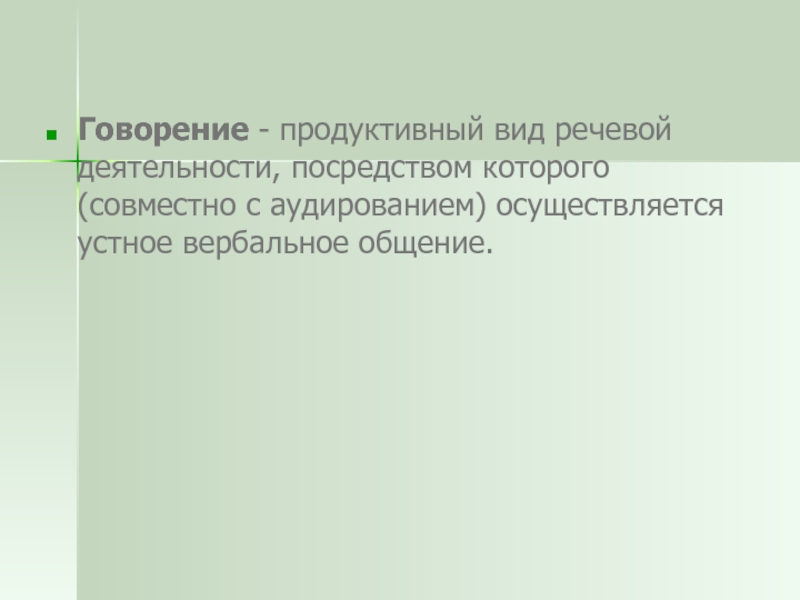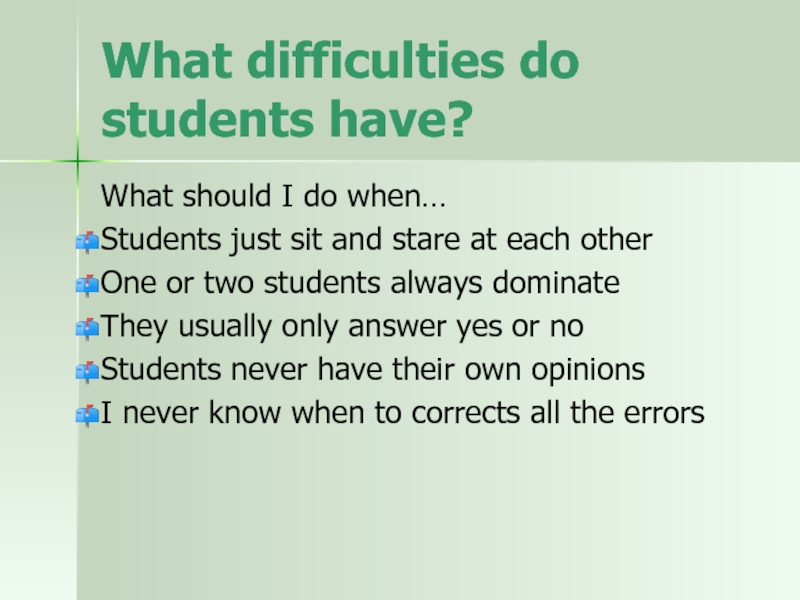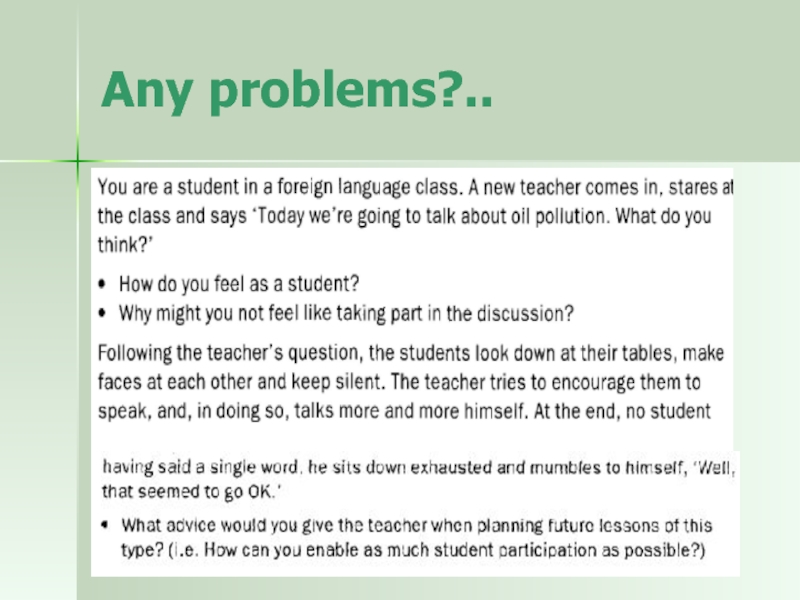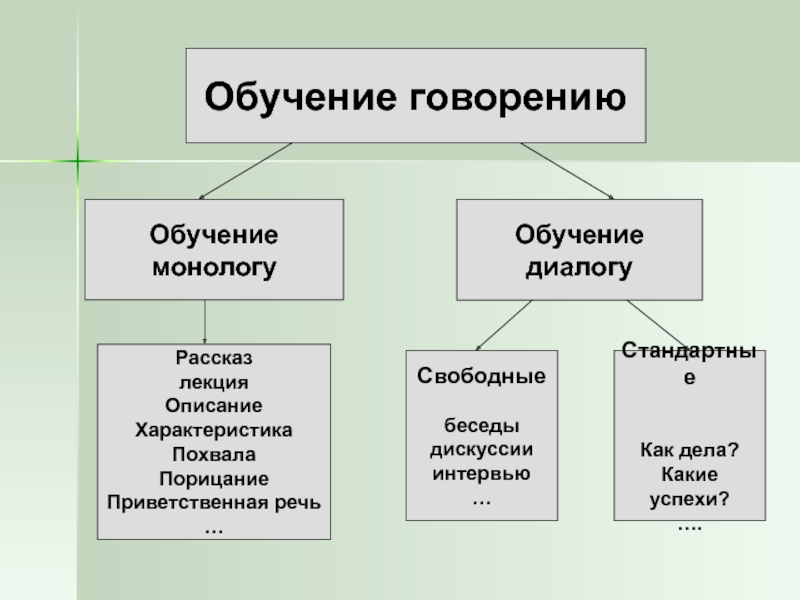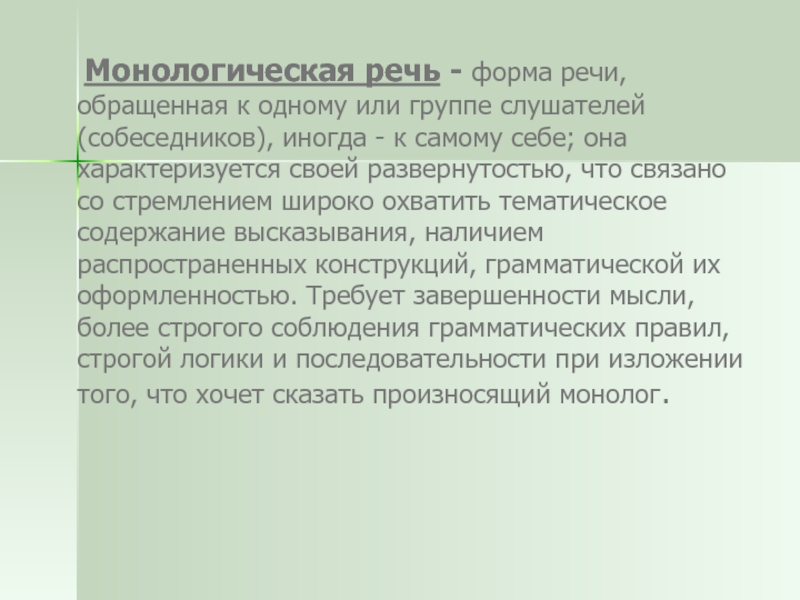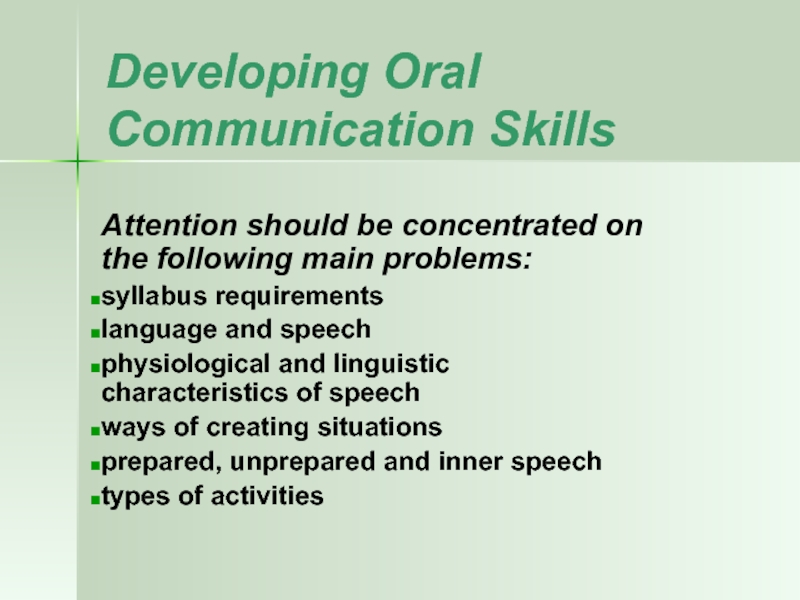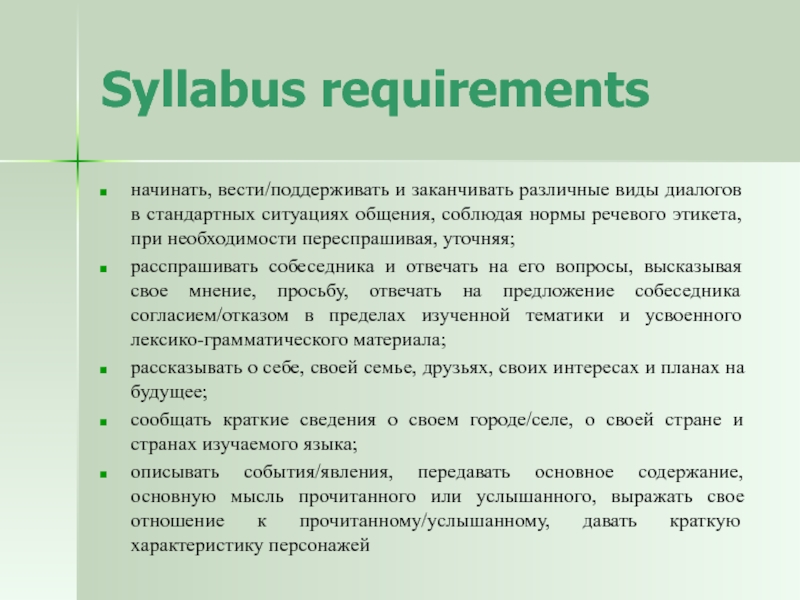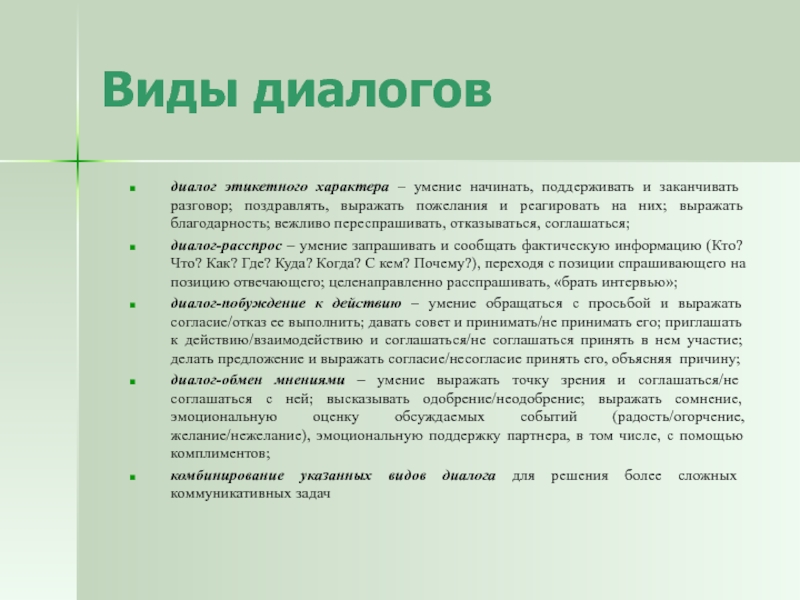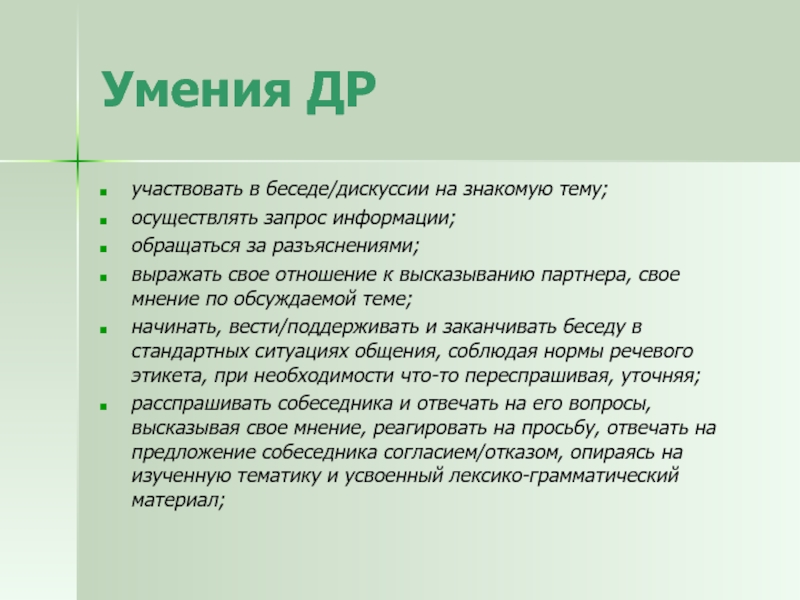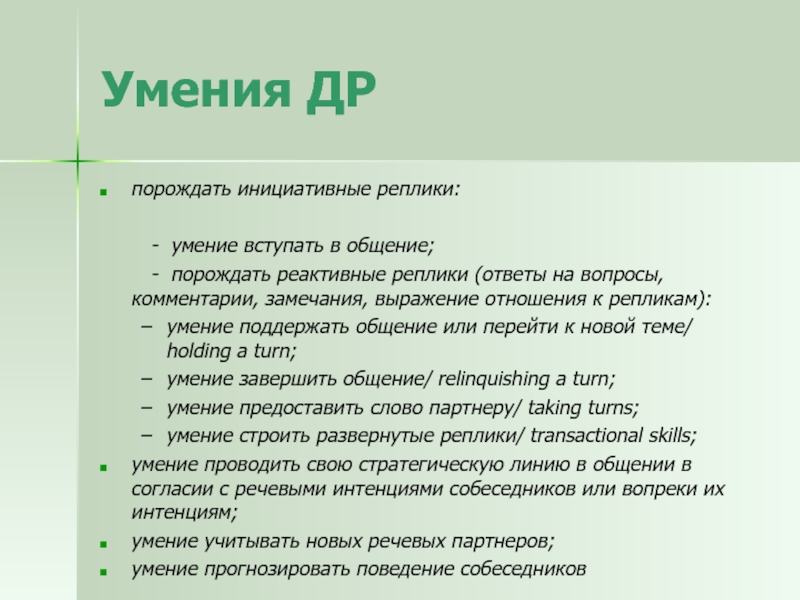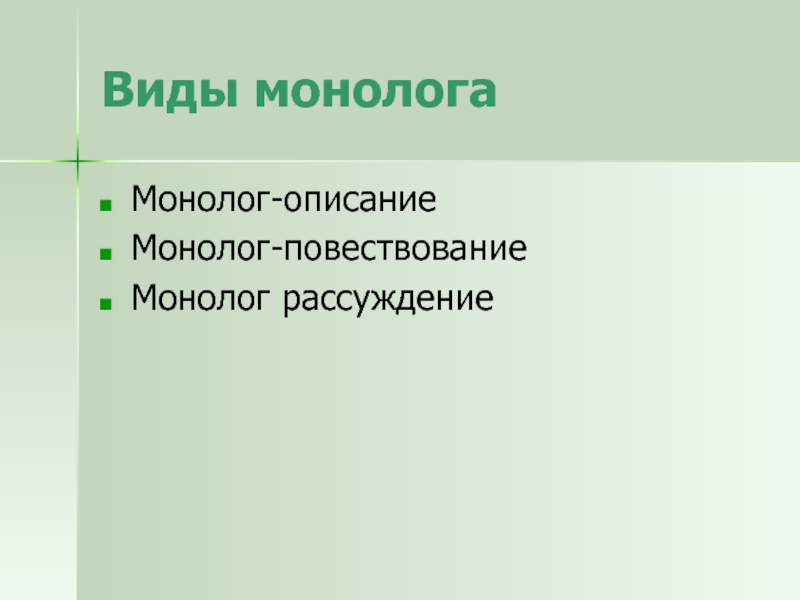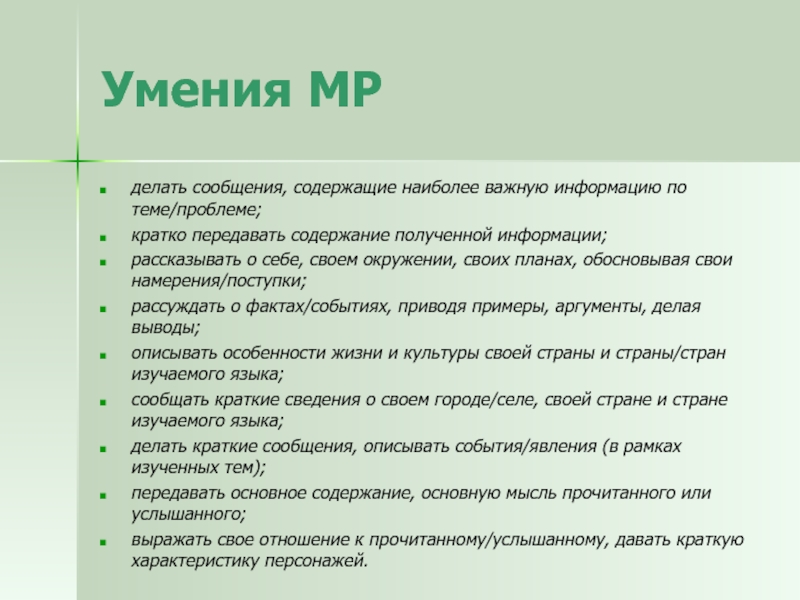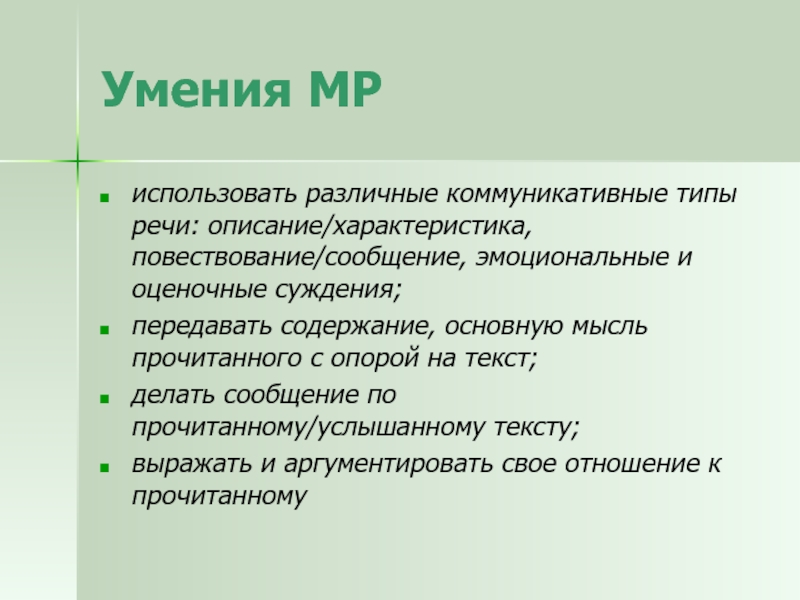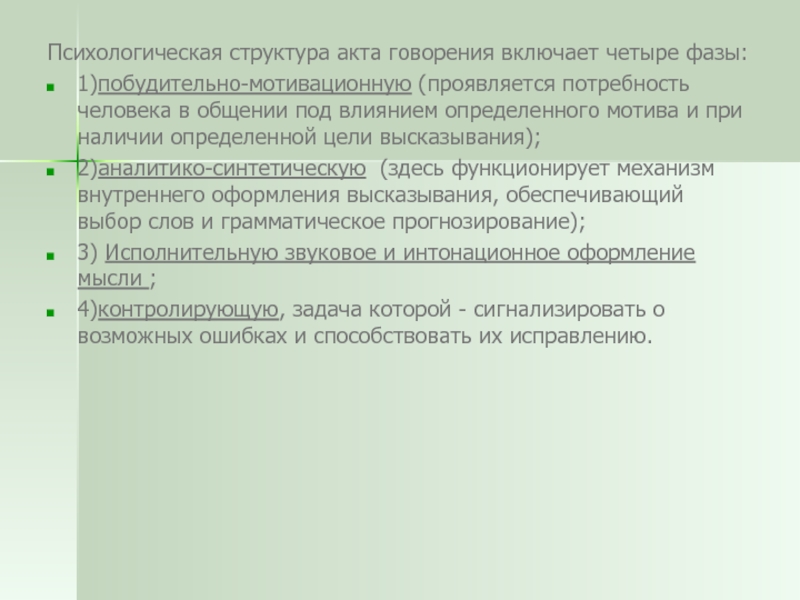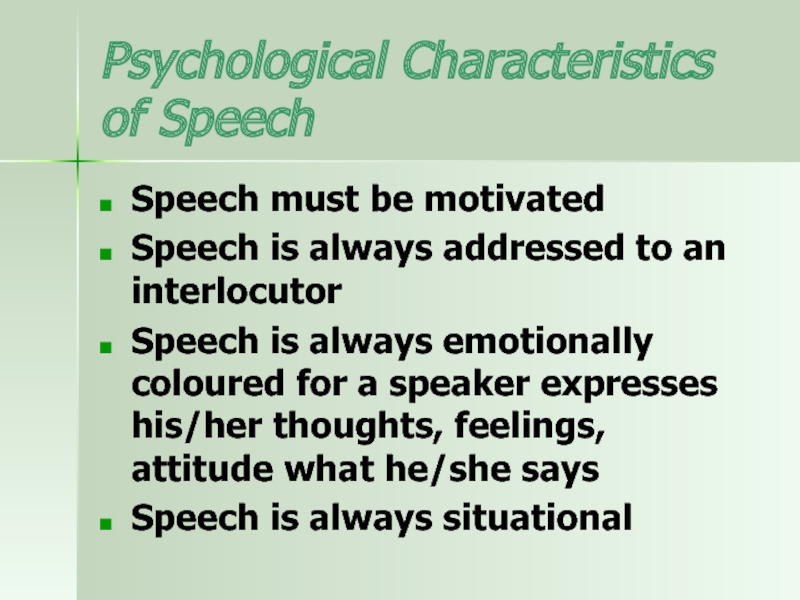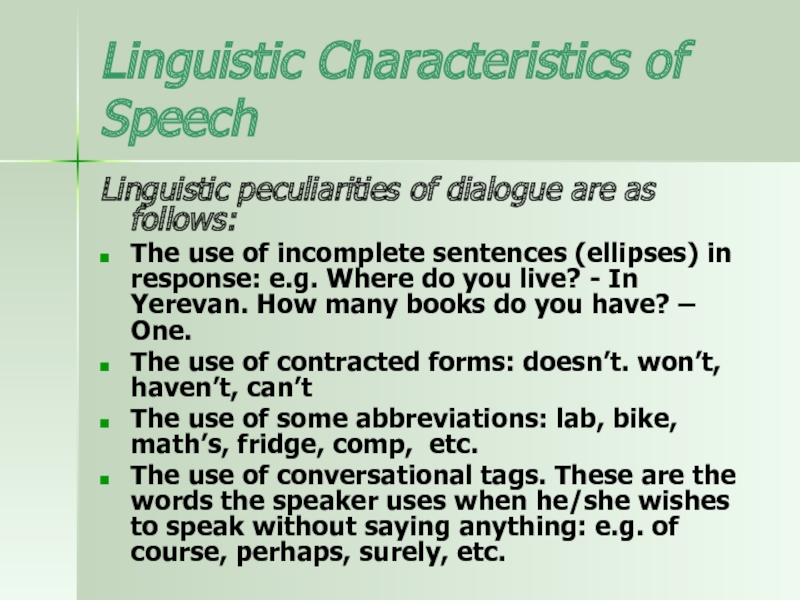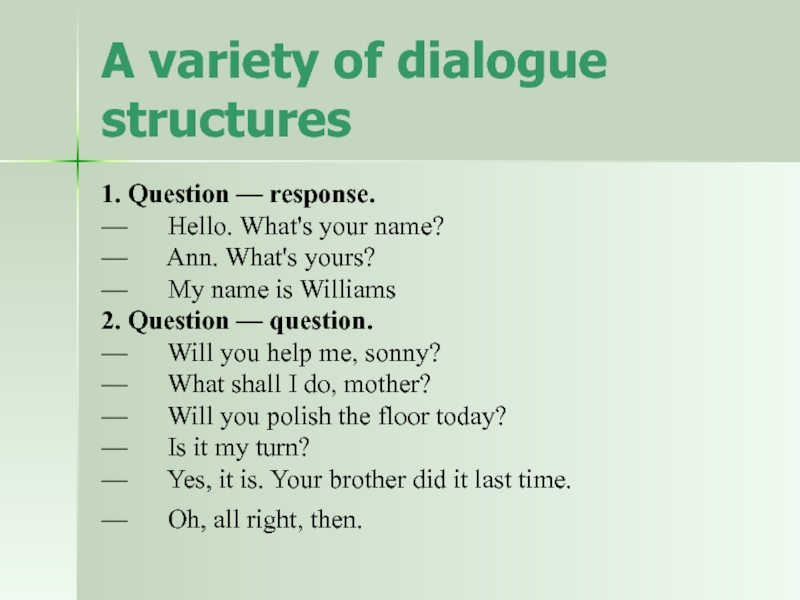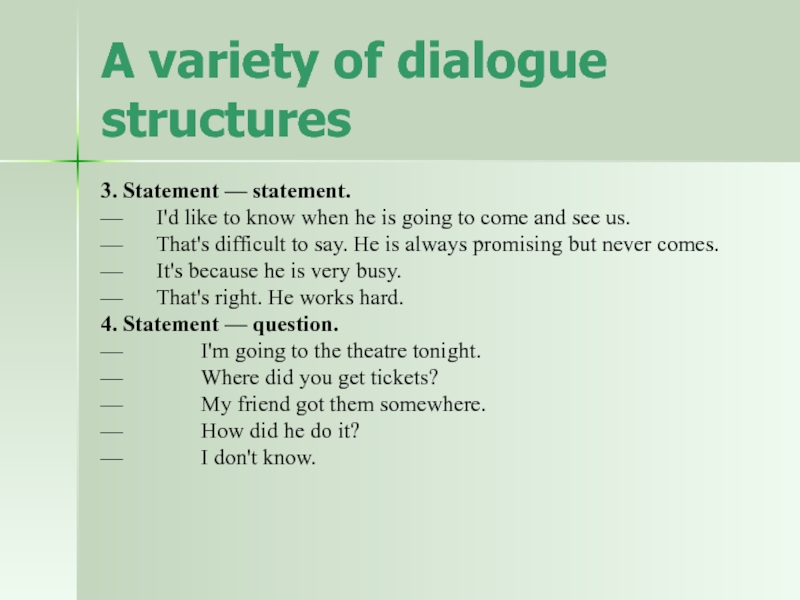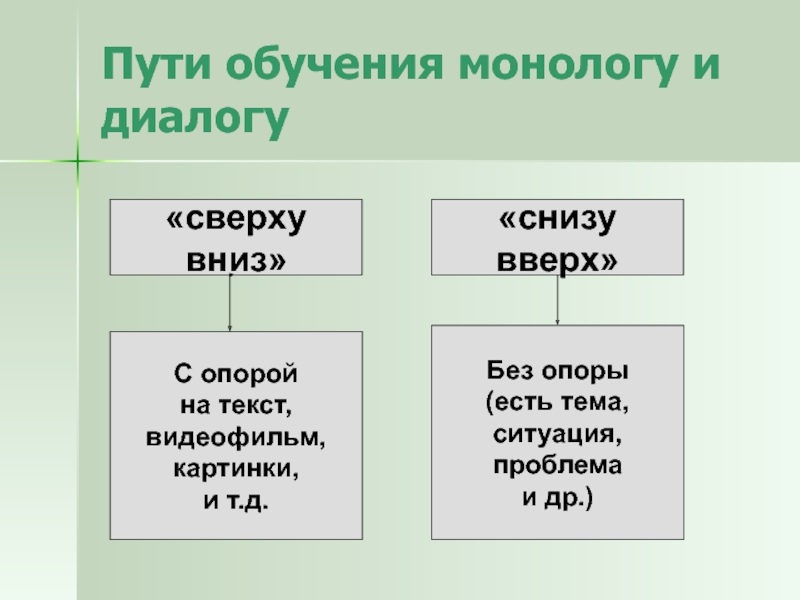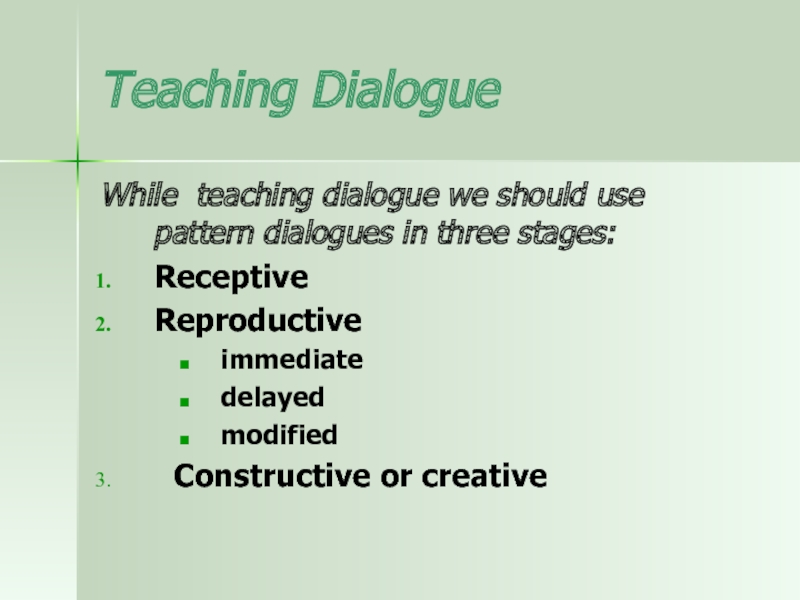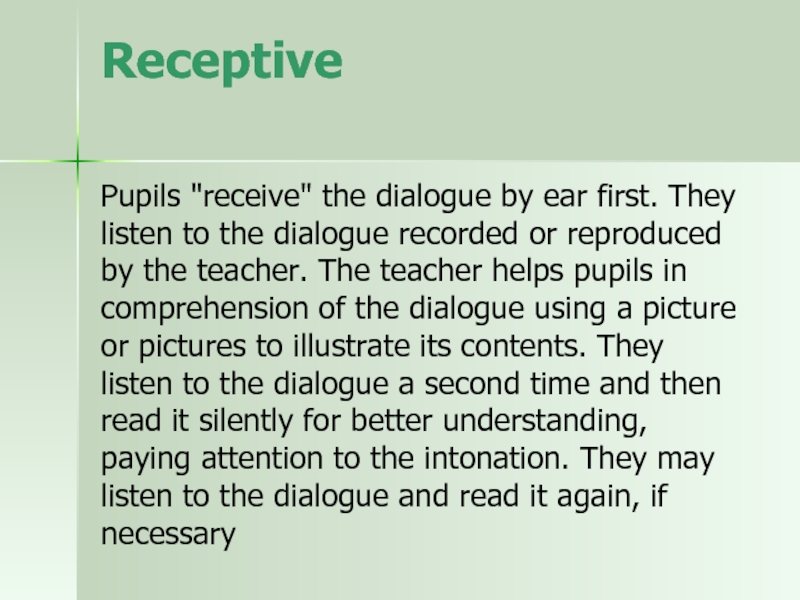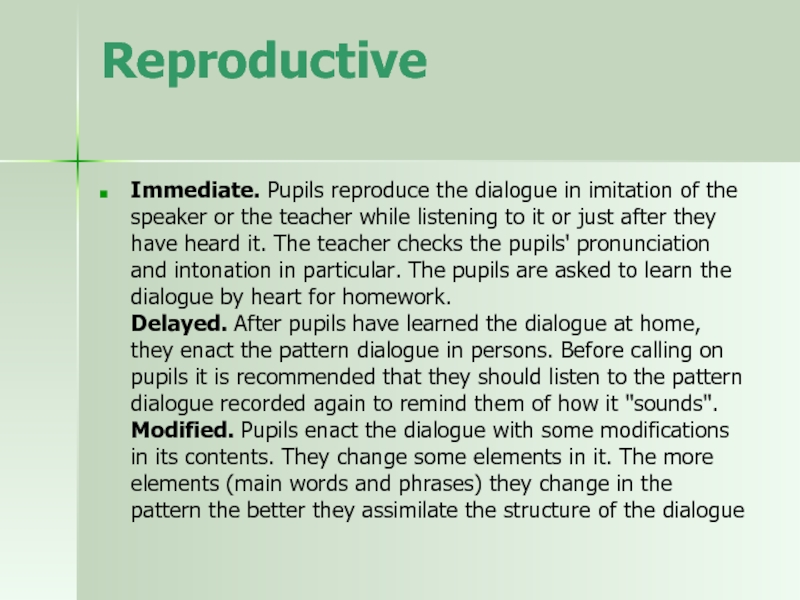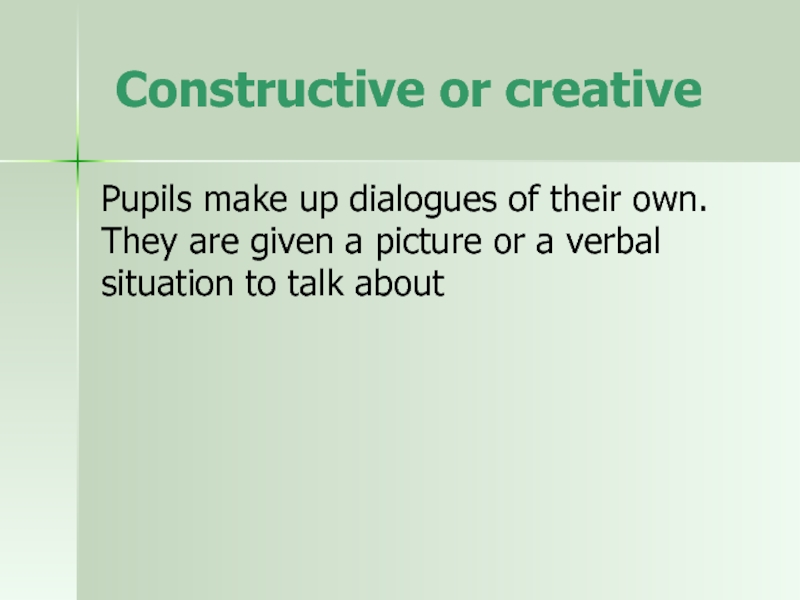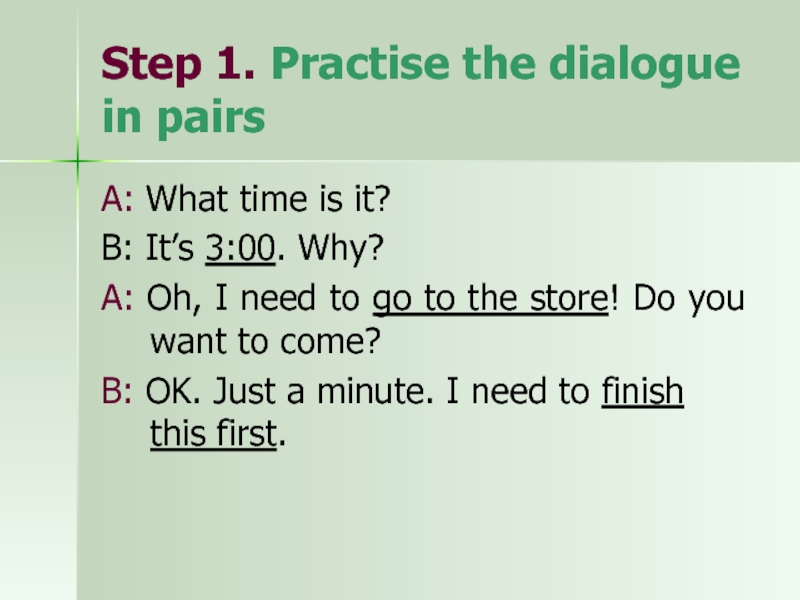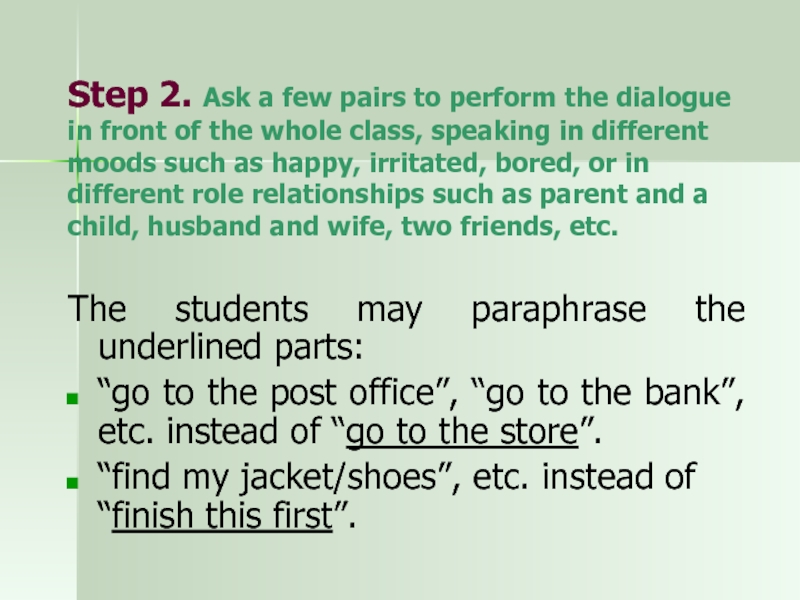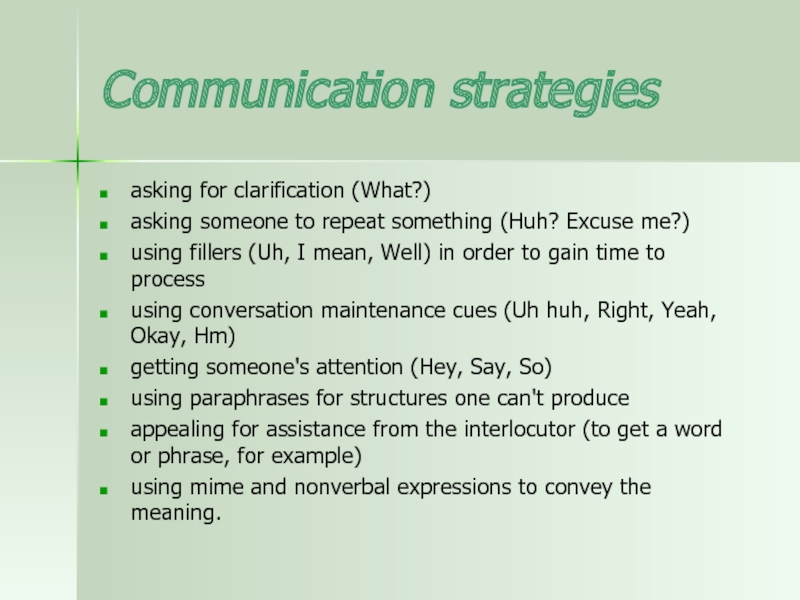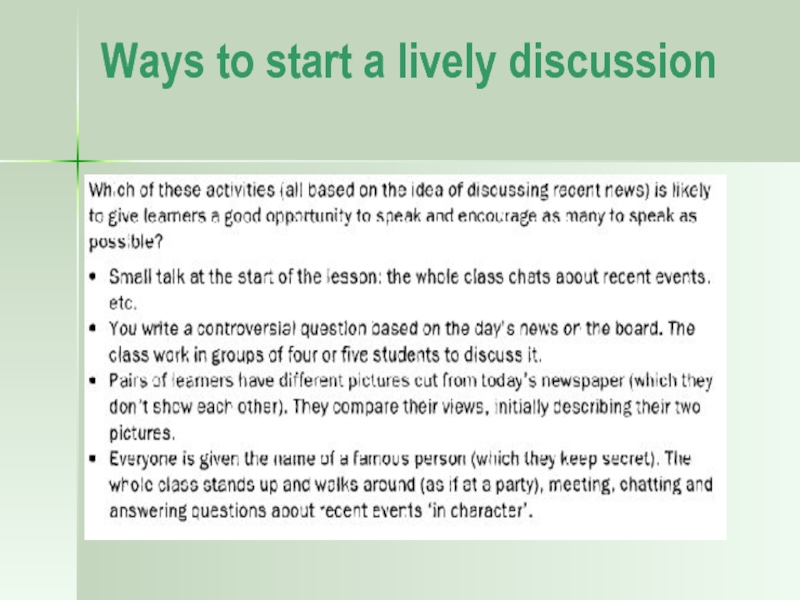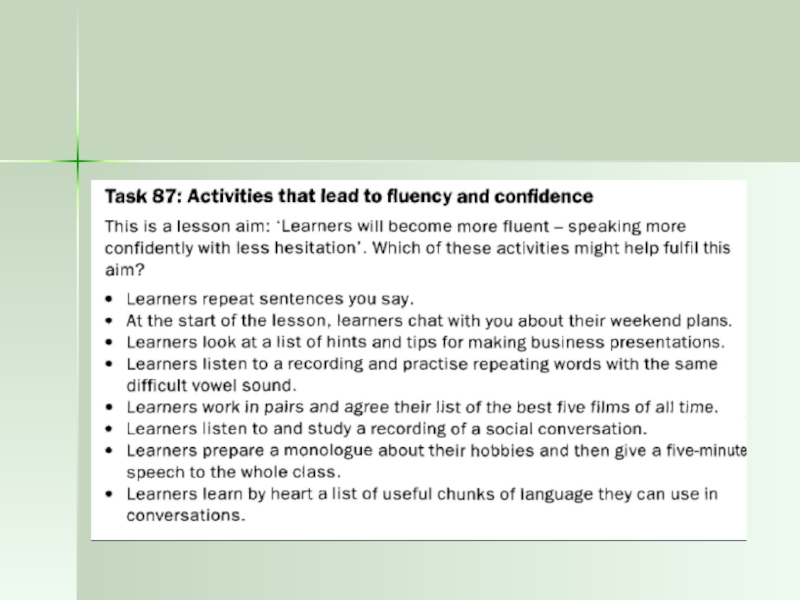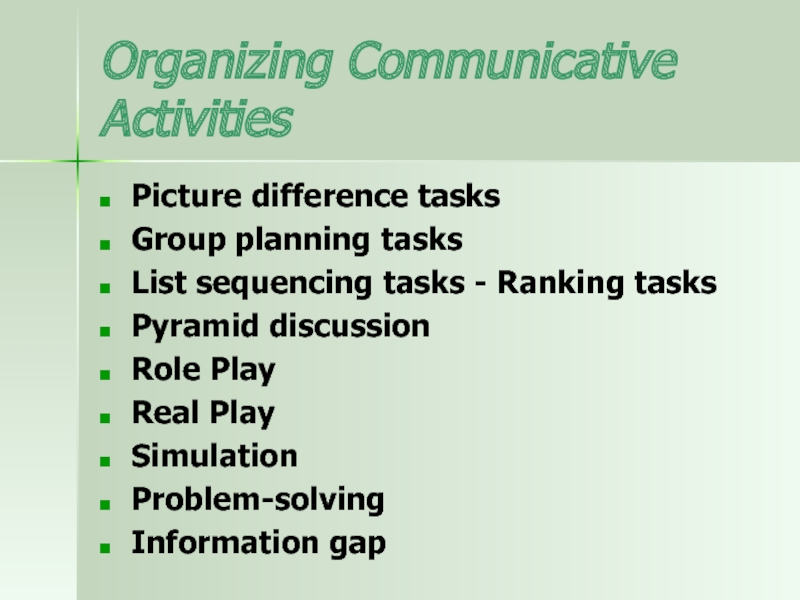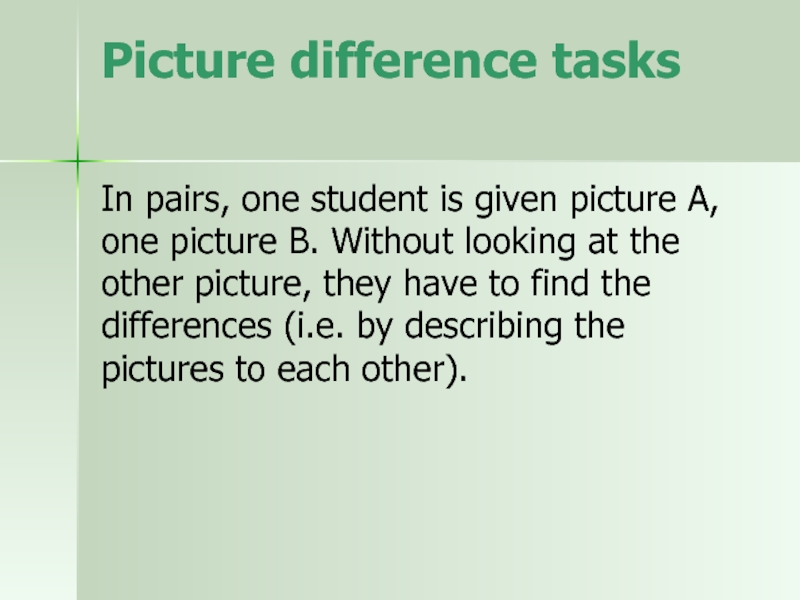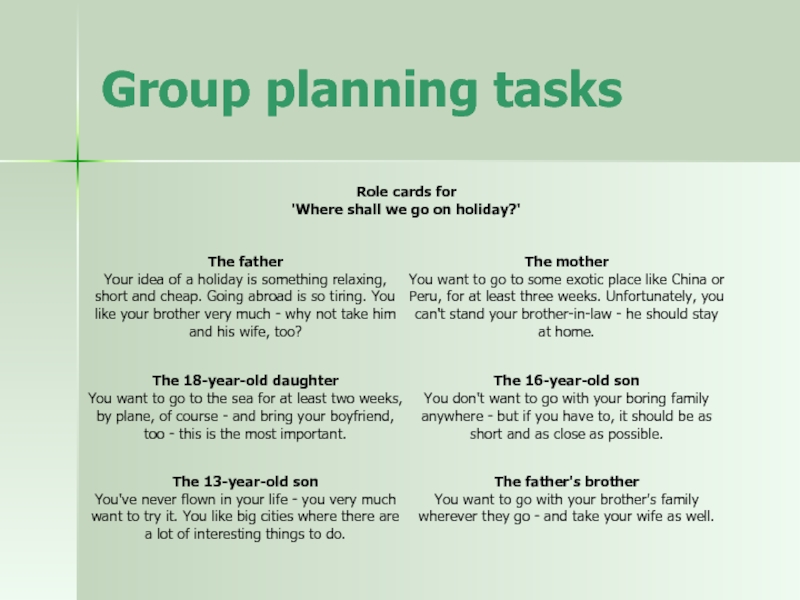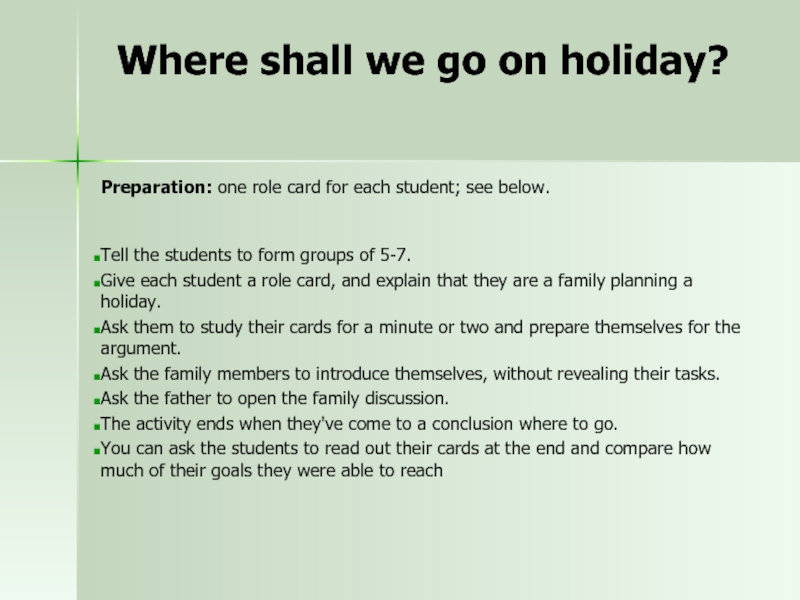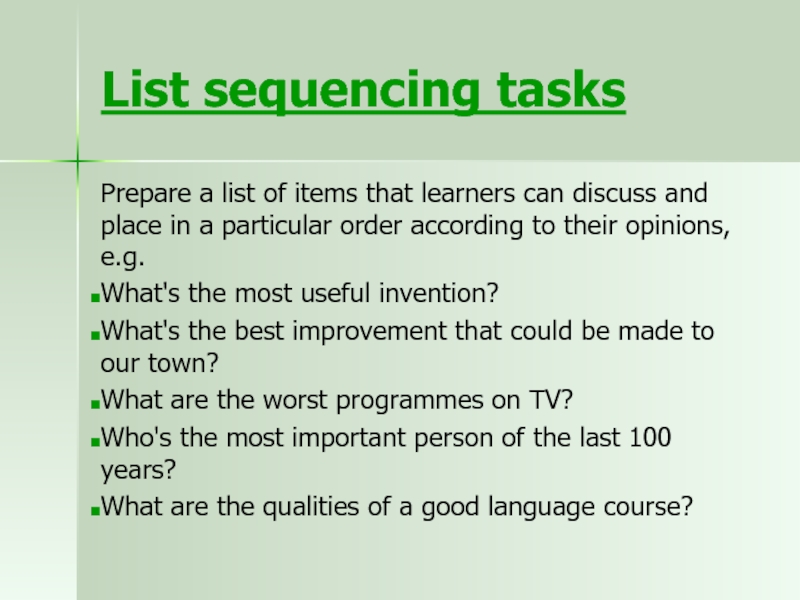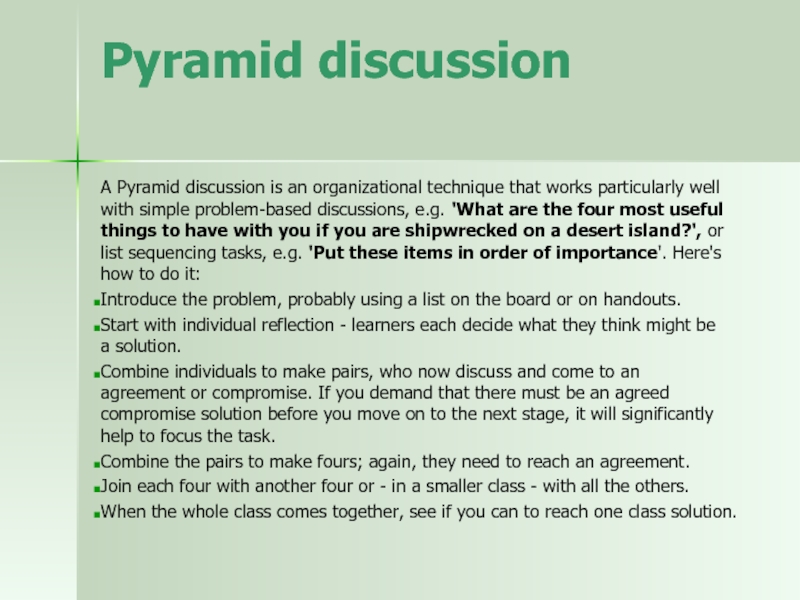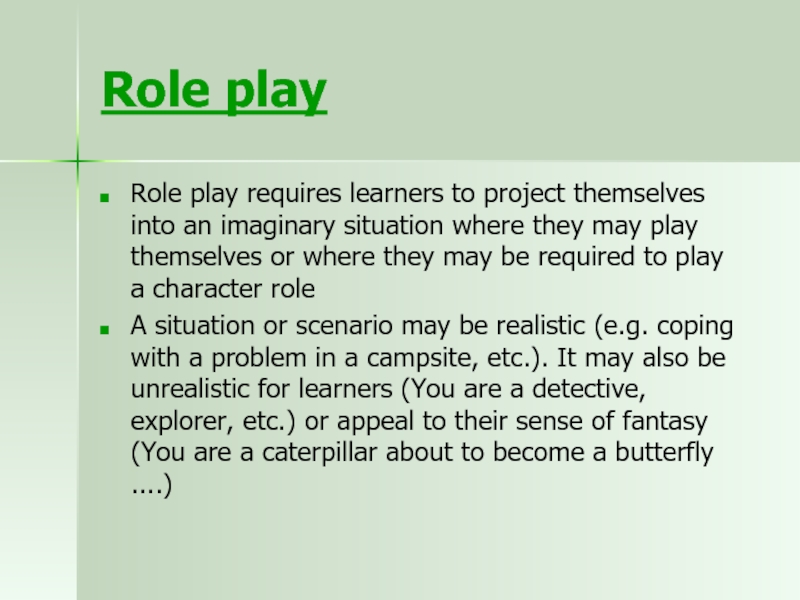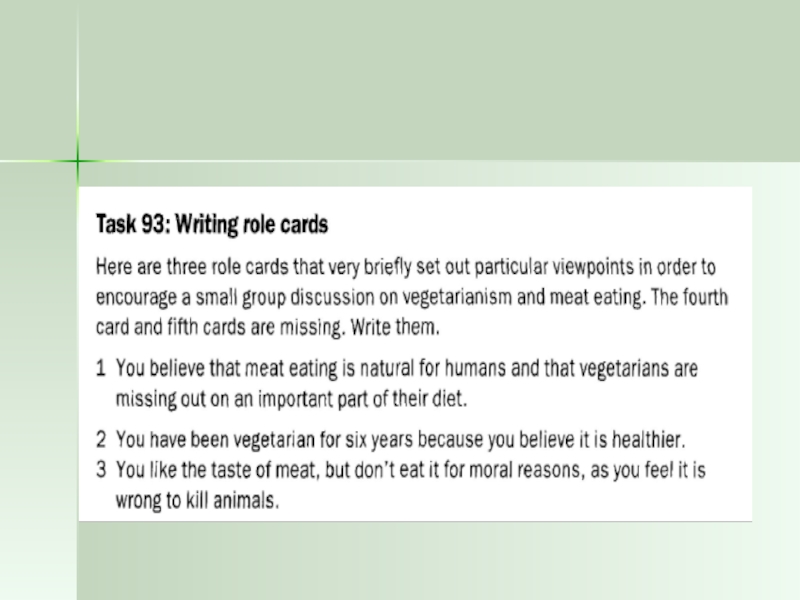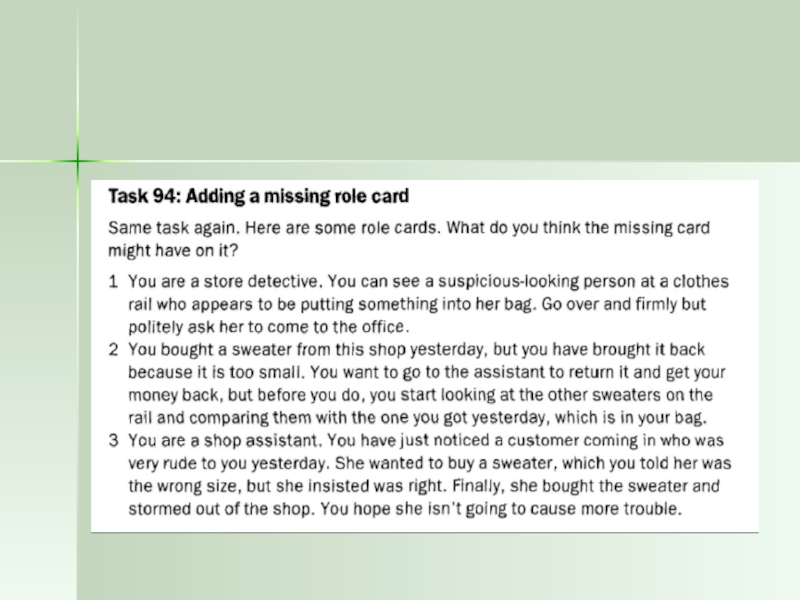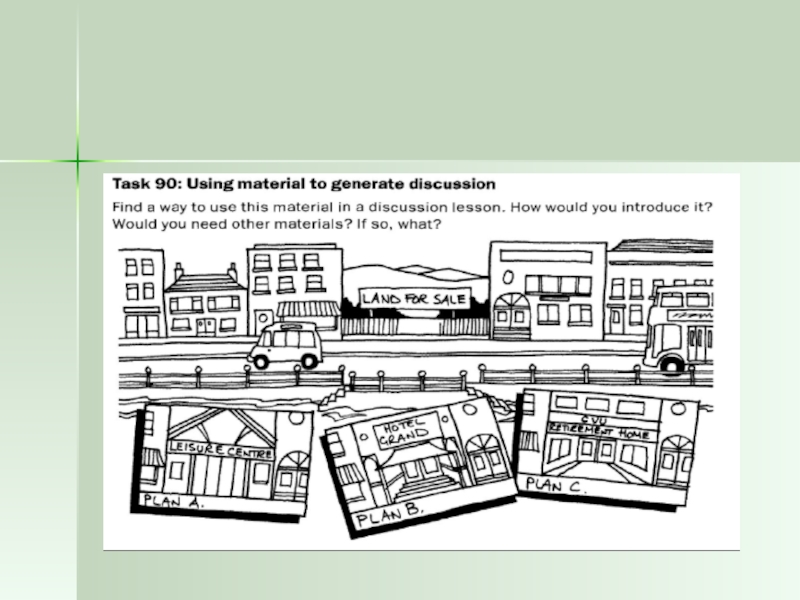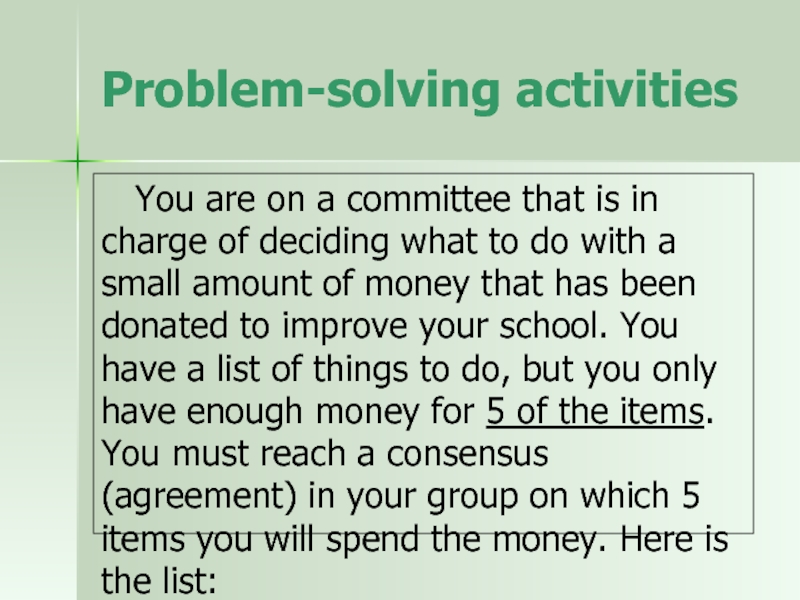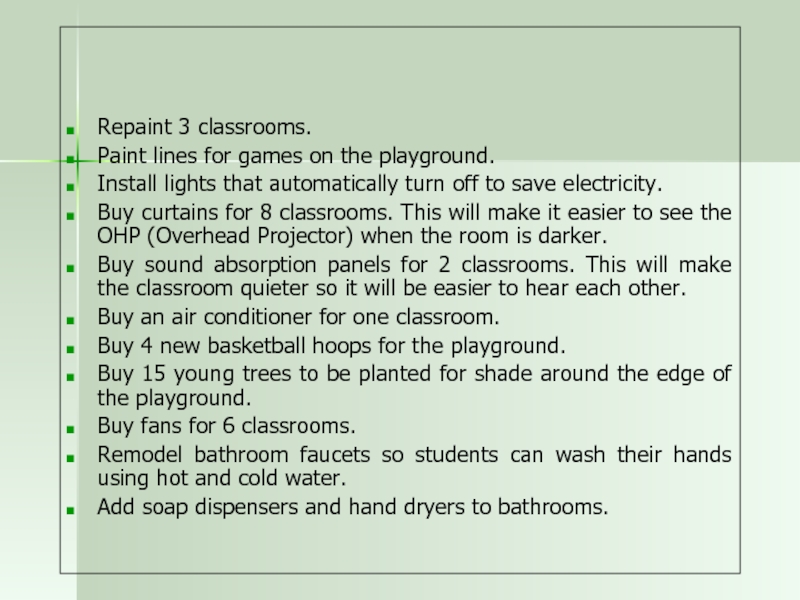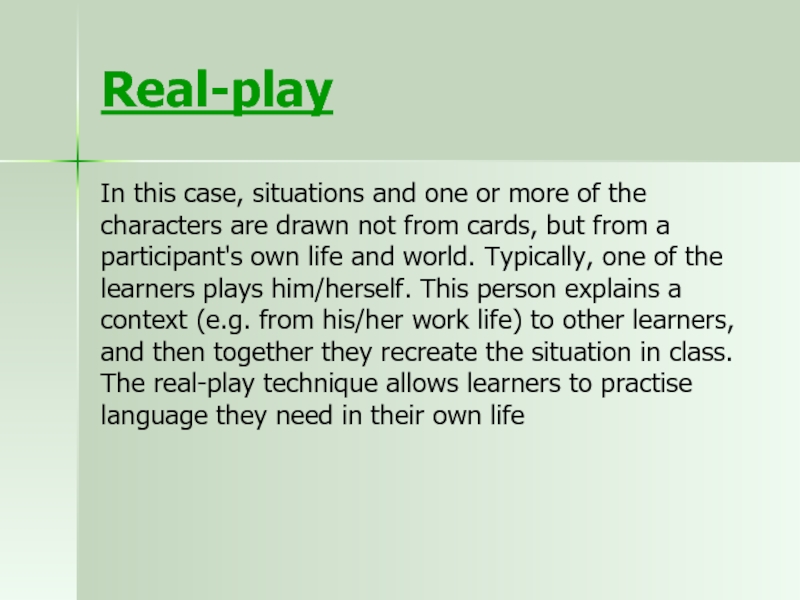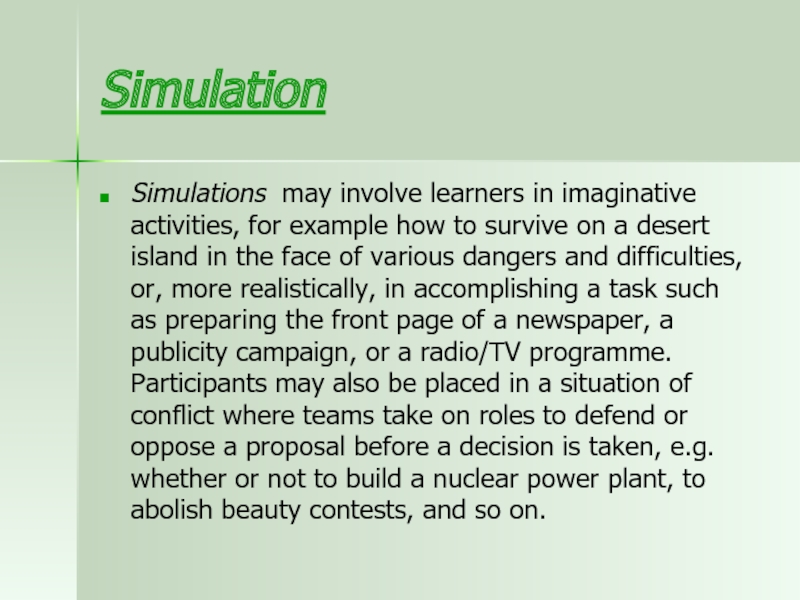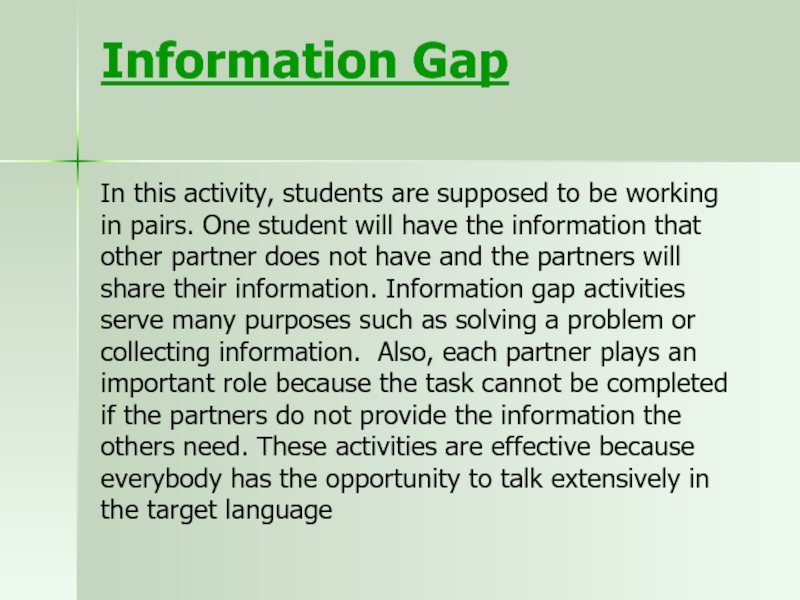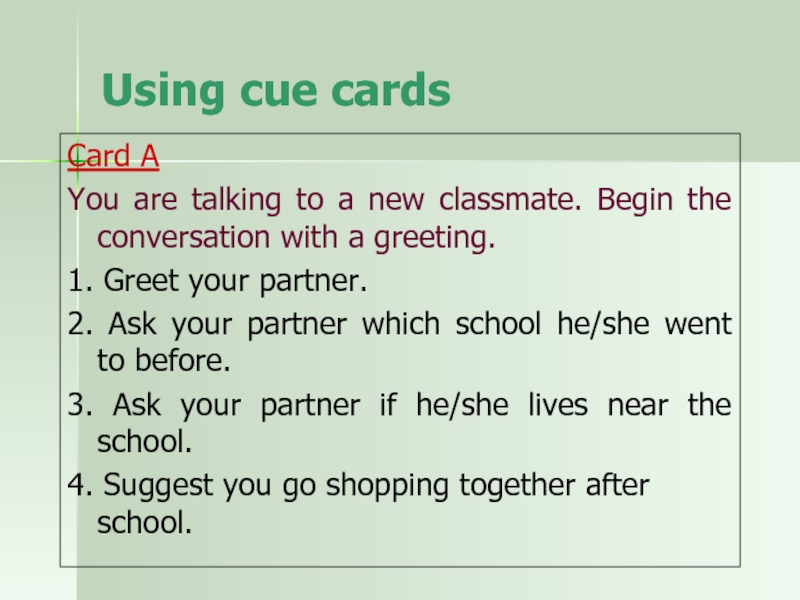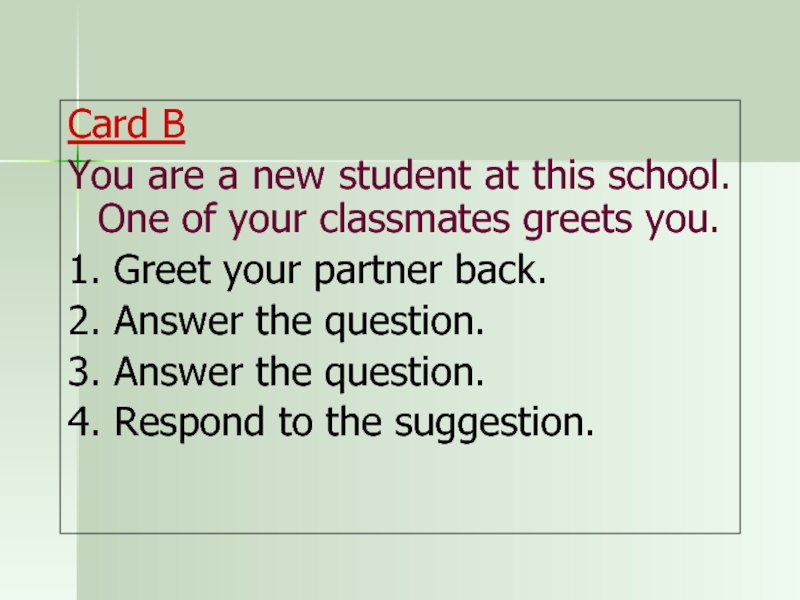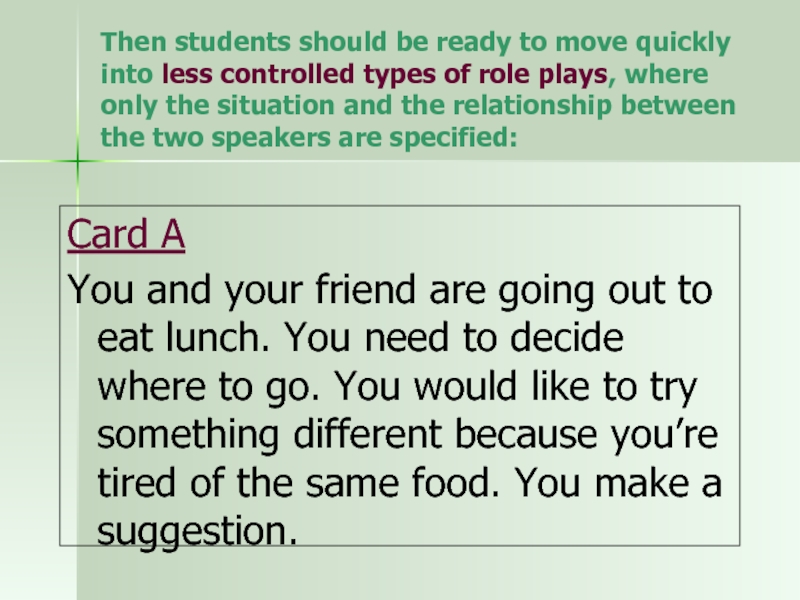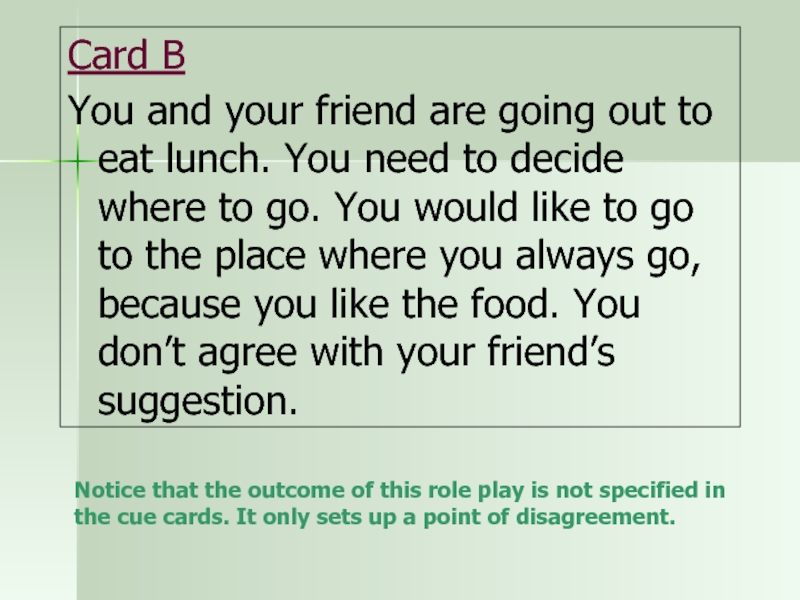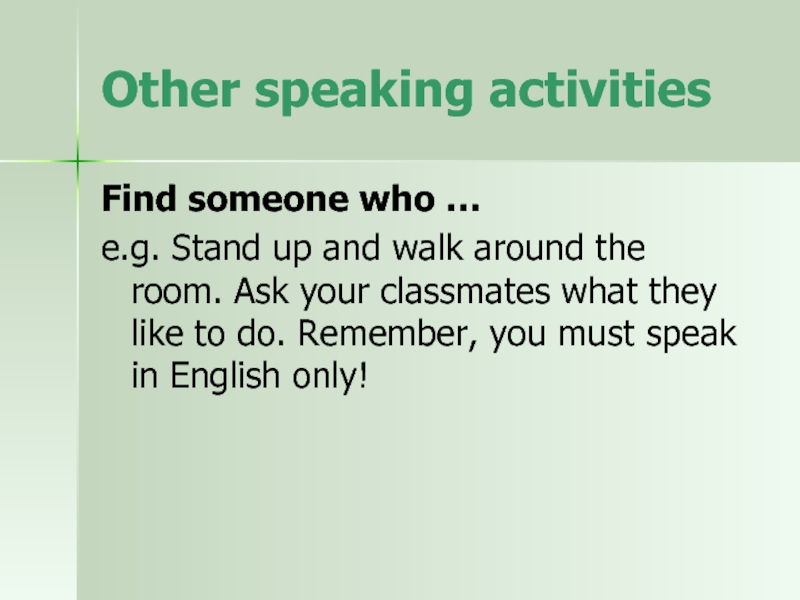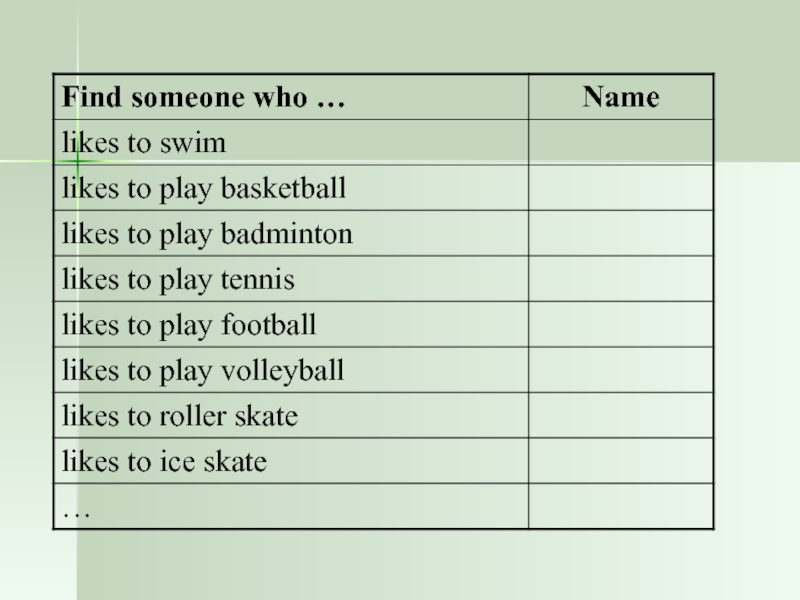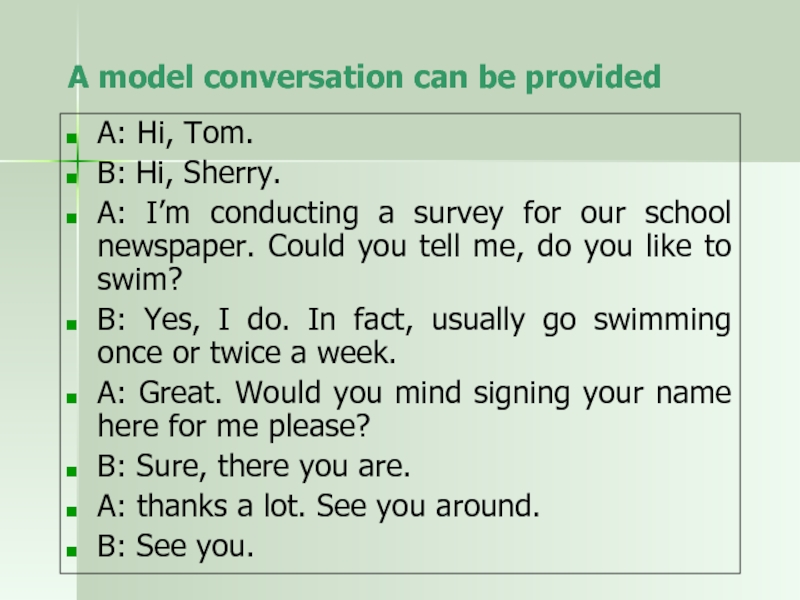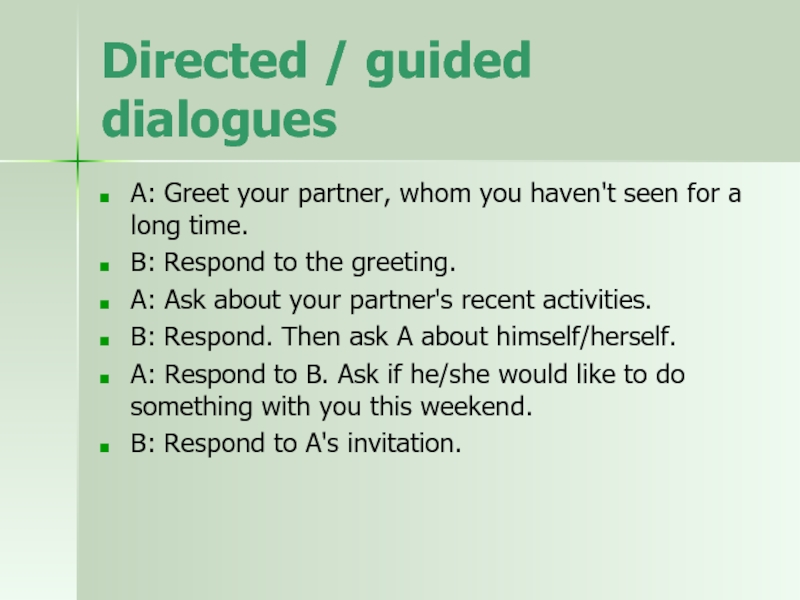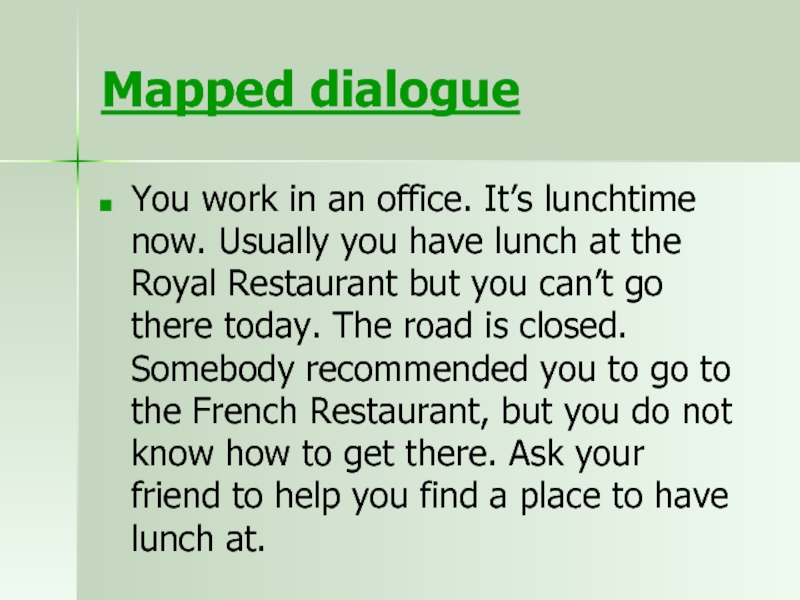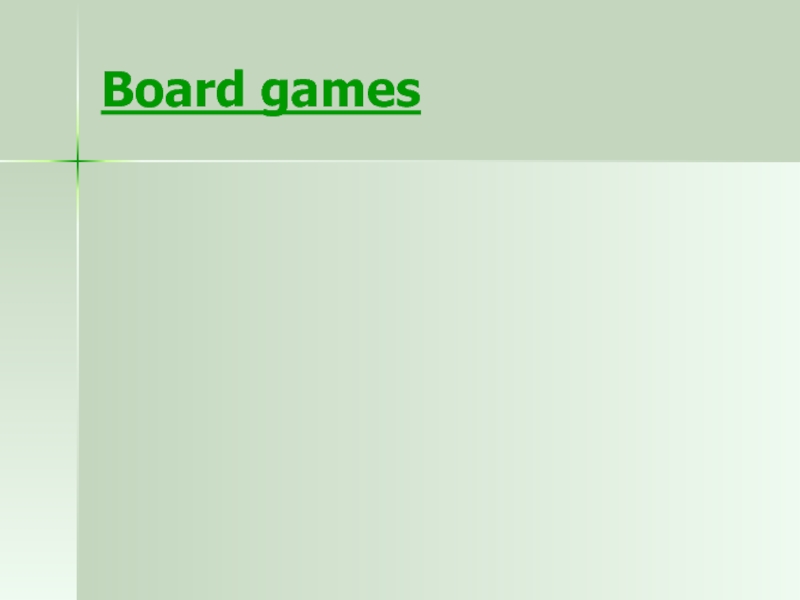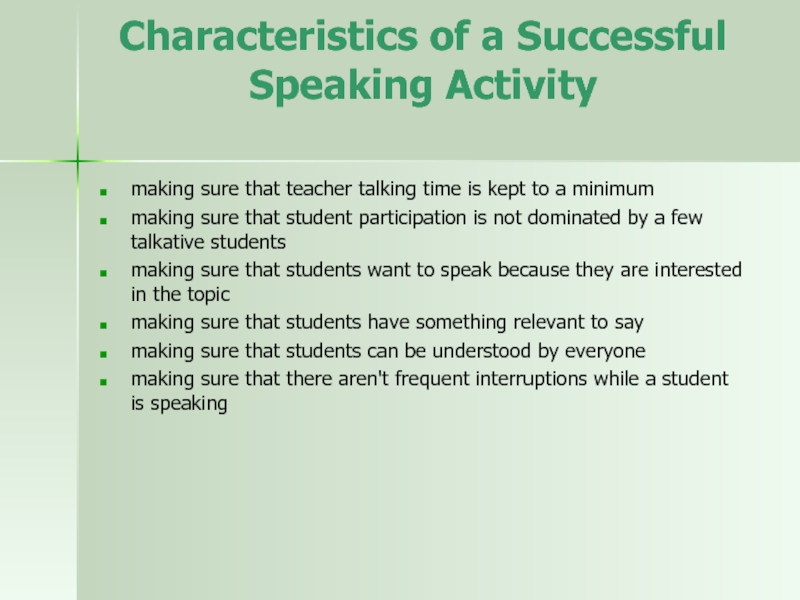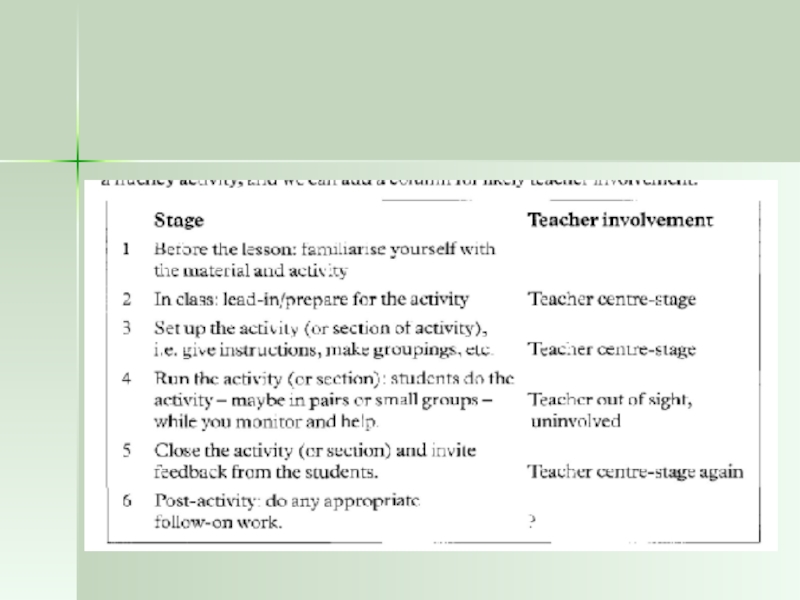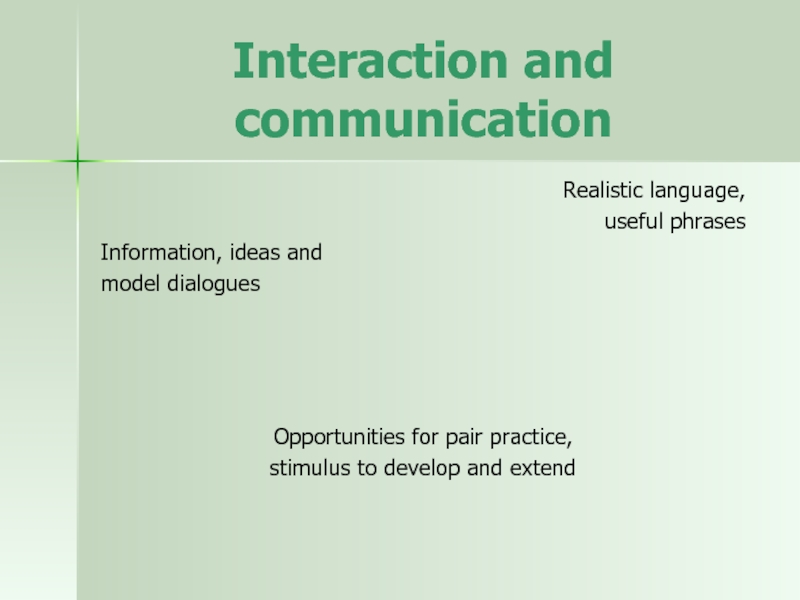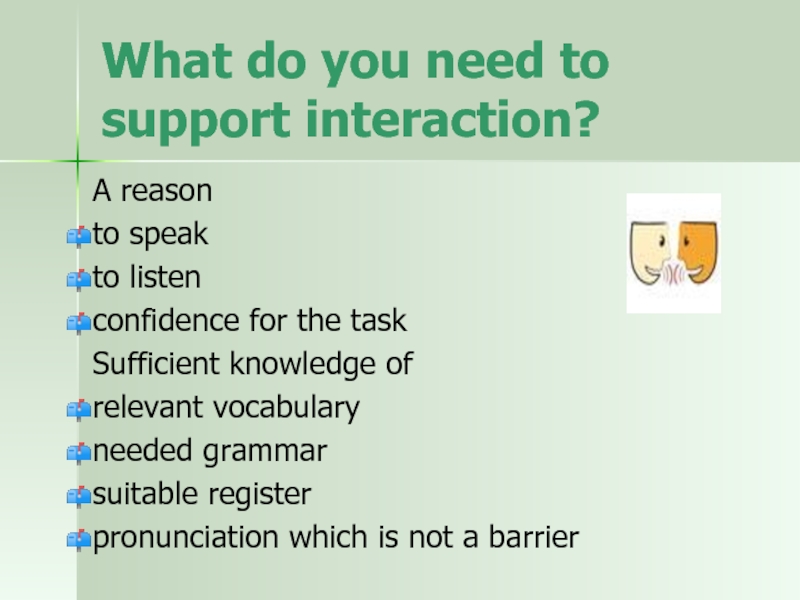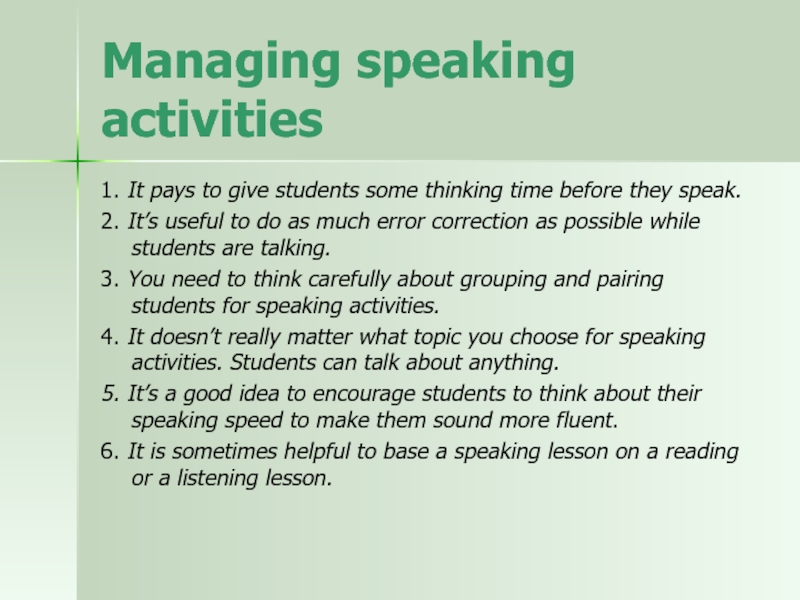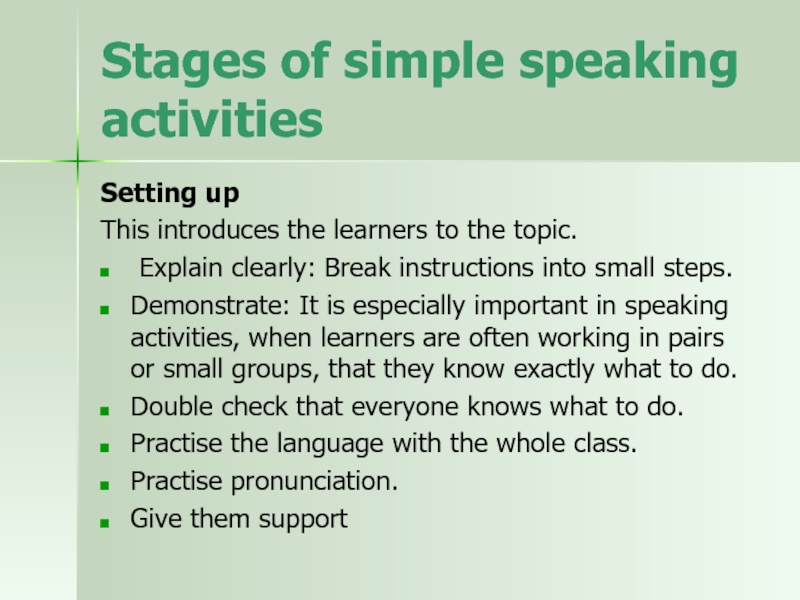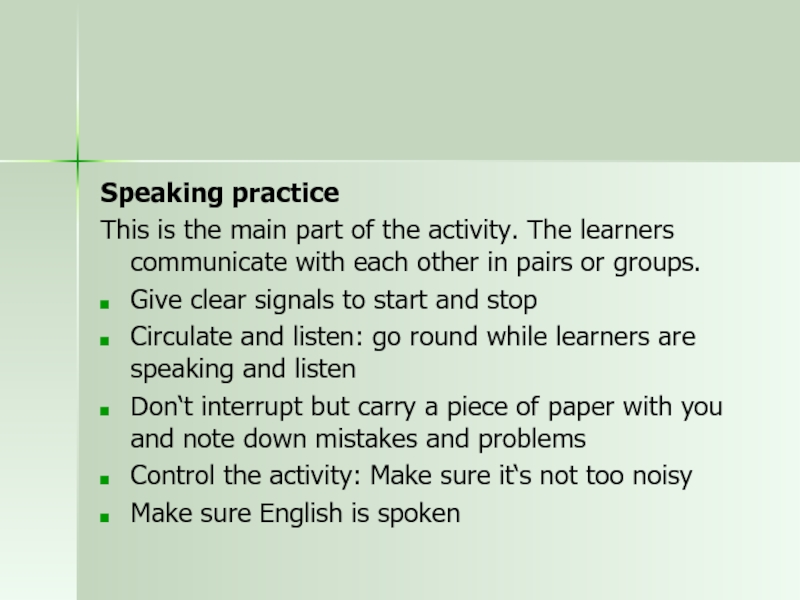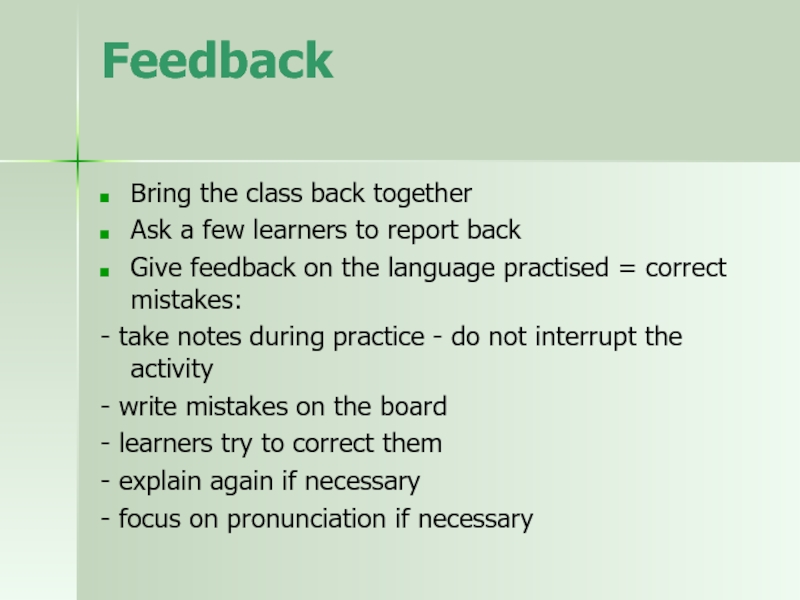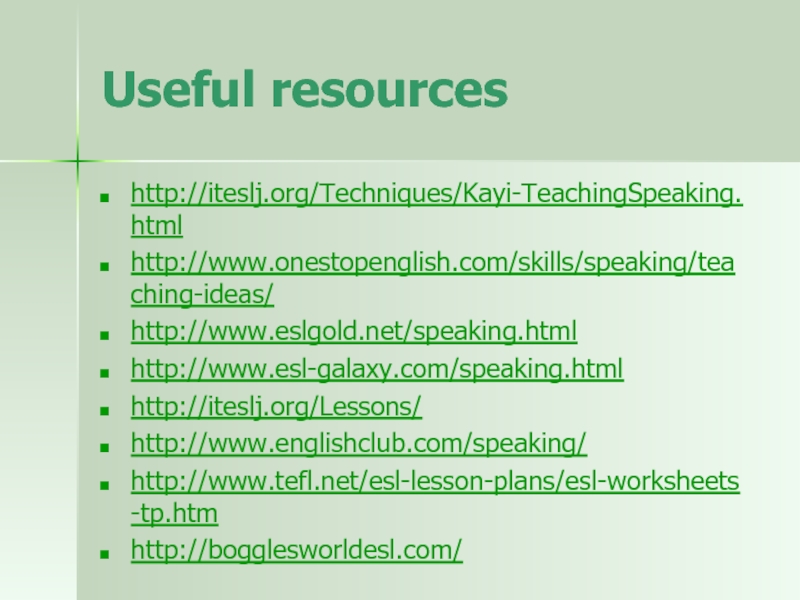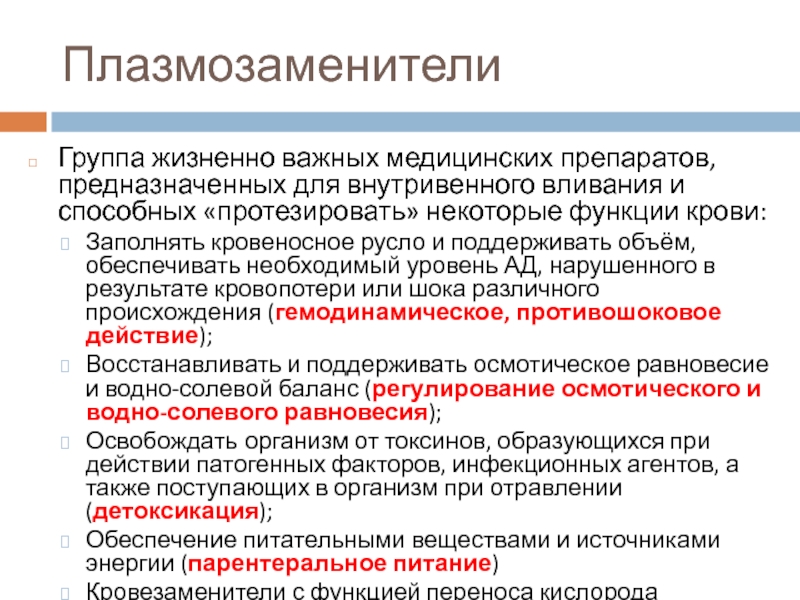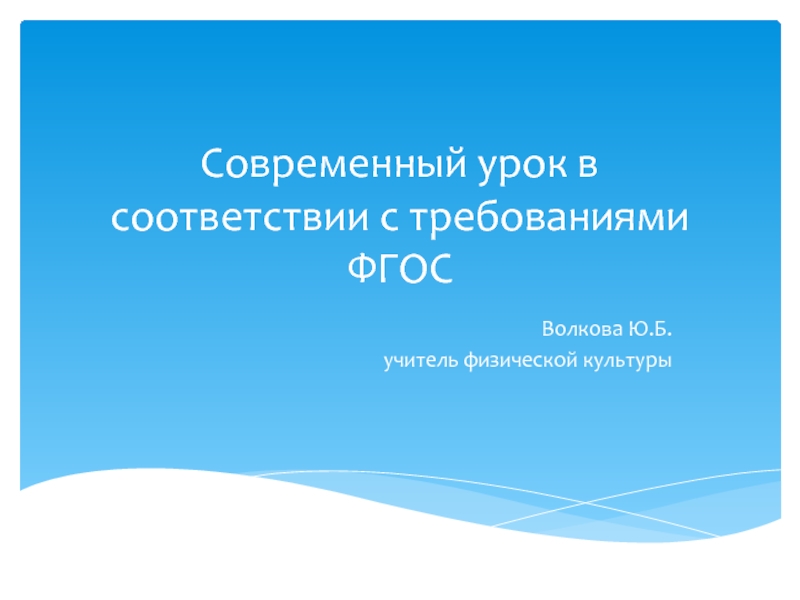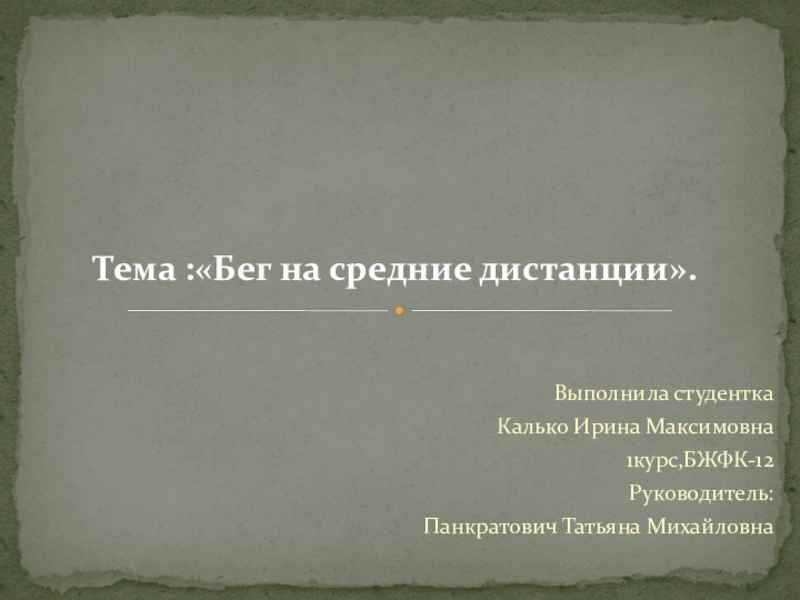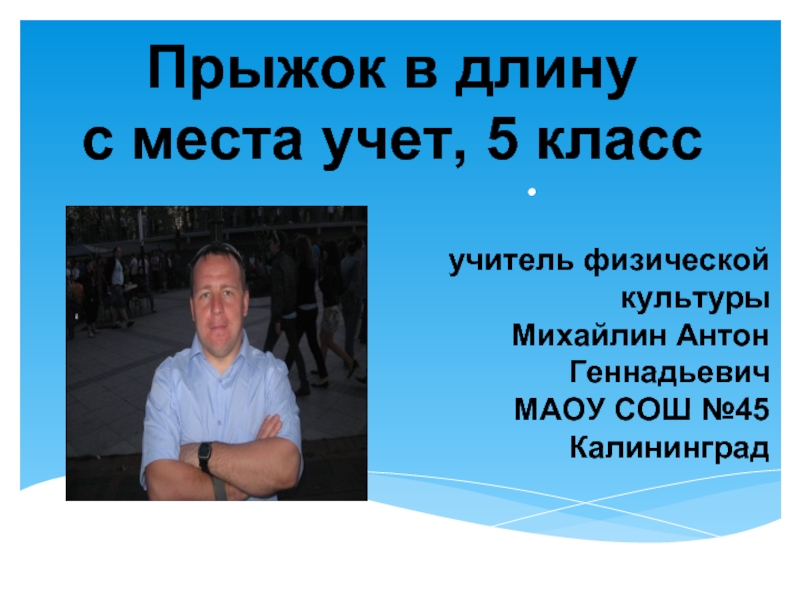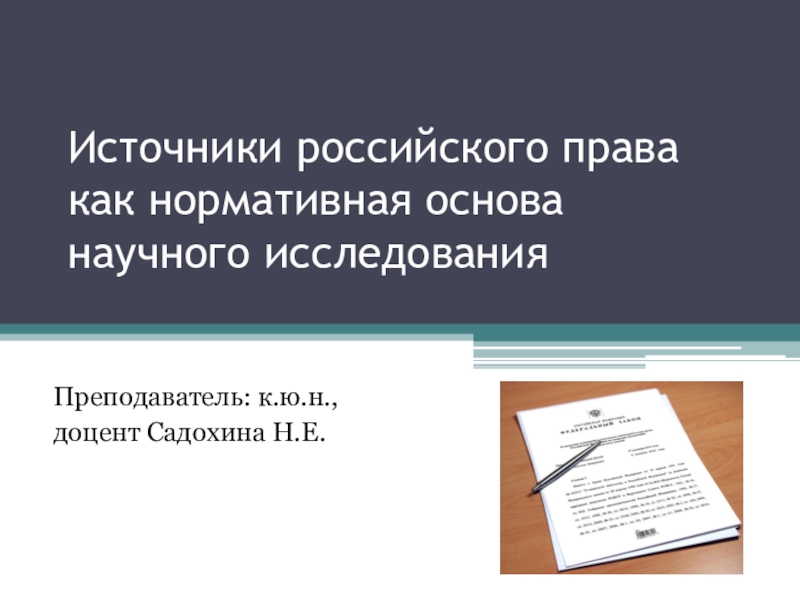Разделы презентаций
- Разное
- Английский язык
- Астрономия
- Алгебра
- Биология
- География
- Геометрия
- Детские презентации
- Информатика
- История
- Литература
- Математика
- Медицина
- Менеджмент
- Музыка
- МХК
- Немецкий язык
- ОБЖ
- Обществознание
- Окружающий мир
- Педагогика
- Русский язык
- Технология
- Физика
- Философия
- Химия
- Шаблоны, картинки для презентаций
- Экология
- Экономика
- Юриспруденция
Teaching Speaking Skills
Содержание
- 1. Teaching Speaking Skills
- 2. Говорение - продуктивный вид речевой деятельности, посредством которого (совместно с аудированием) осуществляется устное вербальное общение.
- 3. What difficulties do students have?What should I
- 4. Any problems?..
- 5. Обучение говорениюОбучение монологуОбучение диалогуРассказлекцияОписаниеХарактеристикаПохвалаПорицаниеПриветственная речь…Свободныебеседыдискуссииинтервью…СтандартныеКак дела?Какие успехи?….
- 6. Диалогическая речь - форма речи, при которой происходит непосредственный обмен высказываниями между двумя или несколькими лицами.
- 7. Монологическая речь - форма речи, обращенная
- 8. Developing Oral Communication SkillsAttention should be concentrated
- 9. Syllabus requirementsначинать, вести/поддерживать и заканчивать различные виды
- 10. Виды диалоговдиалог этикетного характера – умение начинать,
- 11. Умения ДРучаствовать в беседе/дискуссии на знакомую тему;осуществлять
- 12. Умения ДРпорождать инициативные реплики:
- 13. Виды монологаМонолог-описаниеМонолог-повествованиеМонолог рассуждение
- 14. Умения МРделать сообщения, содержащие наиболее важную информацию
- 15. Умения МРиспользовать различные коммуникативные типы речи: описание/характеристика,
- 16. Психологическая структура акта говорения включает четыре фазы:1)побудительно-мотивационную
- 17. Psychological Characteristics of Speech Speech must be
- 18. Linguistic Characteristics of SpeechLinguistic peculiarities of dialogue
- 19. A variety of dialogue structures1. Question —
- 20. A variety of dialogue structures3. Statement —
- 21. Пути обучения монологу и диалогуС опорой на
- 22. Teaching DialogueWhile teaching dialogue we should use
- 23. Receptive Pupils "receive" the dialogue by
- 24. Reproductive Immediate. Pupils reproduce the dialogue in
- 25. Constructive or creative Pupils make up
- 26. Step 1. Practise the dialogue in pairsA:
- 27. Step 2. Ask a few pairs to
- 28. Communication strategiesasking for clarification (What?)asking someone to
- 29. Ways to start a lively discussion
- 30. Слайд 30
- 31. Organizing Communicative ActivitiesPicture difference tasksGroup planning tasksList
- 32. Picture difference tasks In pairs, one student
- 33. Group planning tasks
- 34. Where shall we go on holiday? Preparation: one
- 35. List sequencing tasksPrepare a list of items
- 36. Pyramid discussion A Pyramid discussion is an
- 37. Role playRole play requires learners to project
- 38. Слайд 38
- 39. Слайд 39
- 40. Слайд 40
- 41. Problem-solving activitiesYou are on a committee that
- 42. Repaint 3 classrooms.Paint lines for games on
- 43. Real-playIn this case, situations and one or
- 44. SimulationSimulations may involve learners in imaginative activities,
- 45. Information Gap In this activity, students are
- 46. Using cue cards Card AYou are talking
- 47. Card BYou are a new student at
- 48. Then students should be ready to move
- 49. Notice that the outcome of this role
- 50. Other speaking activitiesFind someone who … e.g.
- 51. Слайд 51
- 52. A model conversation can be provided A:
- 53. Directed / guided dialoguesA: Greet your partner,
- 54. Mapped dialogueYou work in an office. It’s
- 55. Board games
- 56. Characteristics of a Successful Speaking Activity making
- 57. Слайд 57
- 58. Interaction and communicationRealistic language,useful phrasesInformation, ideas and
- 59. What do you need to support interaction?A
- 60. Managing speaking activities1. It pays to give
- 61. Слайд 61
- 62. Stages of simple speaking activitiesSetting up This
- 63. Speaking practiceThis is the main part of
- 64. Feedback Bring the class back
- 65. Useful resources http://iteslj.org/Techniques/Kayi-TeachingSpeaking.htmlhttp://www.onestopenglish.com/skills/speaking/teaching-ideas/http://www.eslgold.net/speaking.htmlhttp://www.esl-galaxy.com/speaking.htmlhttp://iteslj.org/Lessons/http://www.englishclub.com/speaking/http://www.tefl.net/esl-lesson-plans/esl-worksheets-tp.htmhttp://bogglesworldesl.com/
- 66. Скачать презентанцию
Слайды и текст этой презентации
Слайд 2Говорение - продуктивный вид речевой деятельности, посредством которого (совместно с аудированием)
осуществляется устное вербальное общение.
Слайд 3What difficulties do students have?
What should I do when…
Students just
sit and stare at each other
One or two students always
dominateThey usually only answer yes or no
Students never have their own opinions
I never know when to corrects all the errors
Слайд 5Обучение говорению
Обучение монологу
Обучение диалогу
Рассказ
лекция
Описание
Характеристика
Похвала
Порицание
Приветственная речь
…
Свободные
беседы
дискуссии
интервью
…
Стандартные
Как дела?
Какие успехи?
….
Слайд 6Диалогическая речь - форма речи, при которой происходит непосредственный обмен высказываниями
между двумя или несколькими лицами.
Слайд 7 Монологическая речь - форма речи, обращенная к одному или
группе слушателей (собеседников), иногда - к самому себе; она характеризуется
своей развернутостью, что связано со стремлением широко охватить тематическое содержание высказывания, наличием распространенных конструкций, грамматической их оформленностью. Требует завершенности мысли, более строгого соблюдения грамматических правил, строгой логики и последовательности при изложении того, что хочет сказать произносящий монолог.Слайд 8Developing Oral Communication Skills
Attention should be concentrated on the following
main problems:
syllabus requirements
language and speech
physiological and linguistic characteristics of speech
ways
of creating situationsprepared, unprepared and inner speech
types of activities
Слайд 9Syllabus requirements
начинать, вести/поддерживать и заканчивать различные виды диалогов в стандартных
ситуациях общения, соблюдая нормы речевого этикета, при необходимости переспрашивая, уточняя;
расспрашивать
собеседника и отвечать на его вопросы, высказывая свое мнение, просьбу, отвечать на предложение собеседника согласием/отказом в пределах изученной тематики и усвоенного лексико-грамматического материала;рассказывать о себе, своей семье, друзьях, своих интересах и планах на будущее;
сообщать краткие сведения о своем городе/селе, о своей стране и странах изучаемого языка;
описывать события/явления, передавать основное содержание, основную мысль прочитанного или услышанного, выражать свое отношение к прочитанному/услышанному, давать краткую характеристику персонажей
Слайд 10Виды диалогов
диалог этикетного характера – умение начинать, поддерживать и заканчивать
разговор; поздравлять, выражать пожелания и реагировать на них; выражать благодарность;
вежливо переспрашивать, отказываться, соглашаться;диалог-расспрос – умение запрашивать и сообщать фактическую информацию (Кто? Что? Как? Где? Куда? Когда? С кем? Почему?), переходя с позиции спрашивающего на позицию отвечающего; целенаправленно расспрашивать, «брать интервью»;
диалог-побуждение к действию – умение обращаться с просьбой и выражать согласие/отказ ее выполнить; давать совет и принимать/не принимать его; приглашать к действию/взаимодействию и соглашаться/не соглашаться принять в нем участие; делать предложение и выражать согласие/несогласие принять его, объясняя причину;
диалог-обмен мнениями – умение выражать точку зрения и соглашаться/не соглашаться с ней; высказывать одобрение/неодобрение; выражать сомнение, эмоциональную оценку обсуждаемых событий (радость/огорчение, желание/нежелание), эмоциональную поддержку партнера, в том числе, с помощью комплиментов;
комбинирование указанных видов диалога для решения более сложных коммуникативных задач
Слайд 11Умения ДР
участвовать в беседе/дискуссии на знакомую тему;
осуществлять запрос информации;
обращаться за
разъяснениями;
выражать свое отношение к высказыванию партнера, свое мнение по обсуждаемой
теме;начинать, вести/поддерживать и заканчивать беседу в стандартных ситуациях общения, соблюдая нормы речевого этикета, при необходимости что-то переспрашивая, уточняя;
расспрашивать собеседника и отвечать на его вопросы, высказывая свое мнение, реагировать на просьбу, отвечать на предложение собеседника согласием/отказом, опираясь на изученную тематику и усвоенный лексико-грамматический материал;
Слайд 12Умения ДР
порождать инициативные реплики:
- умение вступать
в общение;
- порождать реактивные реплики (ответы
на вопросы, комментарии, замечания, выражение отношения к репликам):умение поддержать общение или перейти к новой теме/ holding a turn;
умение завершить общение/ relinquishing a turn;
умение предоставить слово партнеру/ taking turns;
умение строить развернутые реплики/ transactional skills;
умение проводить свою стратегическую линию в общении в согласии с речевыми интенциями собеседников или вопреки их интенциям;
умение учитывать новых речевых партнеров;
умение прогнозировать поведение собеседников
Слайд 14Умения МР
делать сообщения, содержащие наиболее важную информацию по теме/проблеме;
кратко передавать
содержание полученной информации;
рассказывать о себе, своем окружении, своих планах, обосновывая
свои намерения/поступки;рассуждать о фактах/событиях, приводя примеры, аргументы, делая выводы;
описывать особенности жизни и культуры своей страны и страны/стран изучаемого языка;
сообщать краткие сведения о своем городе/селе, своей стране и стране изучаемого языка;
делать краткие сообщения, описывать события/явления (в рамках изученных тем);
передавать основное содержание, основную мысль прочитанного или услышанного;
выражать свое отношение к прочитанному/услышанному, давать краткую характеристику персонажей.
Слайд 15Умения МР
использовать различные коммуникативные типы речи: описание/характеристика, повествование/сообщение, эмоциональные и
оценочные суждения;
передавать содержание, основную мысль прочитанного с опорой на текст;
делать
сообщение по прочитанному/услышанному тексту;выражать и аргументировать свое отношение к прочитанному
Слайд 16Психологическая структура акта говорения включает четыре фазы:
1)побудительно-мотивационную (проявляется потребность человека
в общении под влиянием определенного мотива и при наличии определенной
цели высказывания);2)аналитико-синтетическую (здесь функционирует механизм внутреннего оформления высказывания, обеспечивающий выбор слов и грамматическое прогнозирование);
3) Исполнительную звуковое и интонационное оформление мысли ;
4)контролирующую, задача которой - сигнализировать о возможных ошибках и способствовать их исправлению.
Слайд 17Psychological Characteristics of Speech
Speech must be motivated
Speech is always
addressed to an interlocutor
Speech is always emotionally coloured for
a speaker expresses his/her thoughts, feelings, attitude what he/she saysSpeech is always situational
Слайд 18Linguistic Characteristics of Speech
Linguistic peculiarities of dialogue are as follows:
The
use of incomplete sentences (ellipses) in response: e.g. Where do
you live? - In Yerevan. How many books do you have? – One.The use of contracted forms: doesn’t. won’t, haven’t, can’t
The use of some abbreviations: lab, bike, math’s, fridge, comp, etc.
The use of conversational tags. These are the words the speaker uses when he/she wishes to speak without saying anything: e.g. of course, perhaps, surely, etc.
Слайд 19A variety of dialogue structures
1. Question — response.
— Hello. What's
your name? — Ann. What's yours? — My name is Williams 2. Question
— question. — Will you help me, sonny? — What shall I do, mother? — Will you polish the floor today? — Is it my turn? — Yes, it is. Your brother did it last time. — Oh, all right, then.Слайд 20A variety of dialogue structures
3. Statement — statement.
— I'd like
to know when he is going to come and see
us. — That's difficult to say. He is always promising but never comes. — It's because he is very busy. — That's right. He works hard. 4. Statement — question. — I'm going to the theatre tonight. — Where did you get tickets? — My friend got them somewhere. — How did he do it? — I don't know.Слайд 21Пути обучения монологу и диалогу
С опорой
на текст,
видеофильм,
картинки,
и т.д.
«снизу
вверх»
«сверху вниз»
Без опоры
(есть тема,
ситуация,
проблема
и др.)
Слайд 22Teaching Dialogue
While teaching dialogue we should use pattern dialogues in
three stages:
Receptive
Reproductive
immediate
delayed
modified
Constructive or creative
Слайд 23Receptive
Pupils "receive" the dialogue by ear first. They listen
to the dialogue recorded or reproduced by the teacher. The
teacher helps pupils in comprehension of the dialogue using a picture or pictures to illustrate its contents. They listen to the dialogue a second time and then read it silently for better understanding, paying attention to the intonation. They may listen to the dialogue and read it again, if necessaryСлайд 24Reproductive
Immediate. Pupils reproduce the dialogue in imitation of the speaker
or the teacher while listening to it or just after
they have heard it. The teacher checks the pupils' pronunciation and intonation in particular. The pupils are asked to learn the dialogue by heart for homework. Delayed. After pupils have learned the dialogue at home, they enact the pattern dialogue in persons. Before calling on pupils it is recommended that they should listen to the pattern dialogue recorded again to remind them of how it "sounds". Modified. Pupils enact the dialogue with some modifications in its contents. They change some elements in it. The more elements (main words and phrases) they change in the pattern the better they assimilate the structure of the dialogueСлайд 25 Constructive or creative
Pupils make up dialogues of their
own. They are given a picture or a verbal situation
to talk aboutСлайд 26Step 1. Practise the dialogue in pairs
A: What time is
it?
B: It’s 3:00. Why?
A: Oh, I need to go to
the store! Do you want to come?B: OK. Just a minute. I need to finish this first.
Слайд 27Step 2. Ask a few pairs to perform the dialogue
in front of the whole class, speaking in different moods
such as happy, irritated, bored, or in different role relationships such as parent and a child, husband and wife, two friends, etc.The students may paraphrase the underlined parts:
“go to the post office”, “go to the bank”, etc. instead of “go to the store”.
“find my jacket/shoes”, etc. instead of “finish this first”.
Слайд 28Communication strategies
asking for clarification (What?)
asking someone to repeat something (Huh?
Excuse me?)
using fillers (Uh, I mean, Well) in order to
gain time to processusing conversation maintenance cues (Uh huh, Right, Yeah, Okay, Hm)
getting someone's attention (Hey, Say, So)
using paraphrases for structures one can't produce
appealing for assistance from the interlocutor (to get a word or phrase, for example)
using mime and nonverbal expressions to convey the meaning.
Слайд 31Organizing Communicative Activities
Picture difference tasks
Group planning tasks
List sequencing tasks -
Ranking tasks
Pyramid discussion
Role Play
Real Play
Simulation
Problem-solving
Information gap
Слайд 32Picture difference tasks
In pairs, one student is given picture A,
one picture B. Without looking at the other picture, they
have to find the differences (i.e. by describing the pictures to each other).Слайд 34Where shall we go on holiday?
Preparation: one role card for each
student; see below.
Tell the students to form groups of 5-7.
Give
each student a role card, and explain that they are a family planning a holiday.Ask them to study their cards for a minute or two and prepare themselves for the argument.
Ask the family members to introduce themselves, without revealing their tasks.
Ask the father to open the family discussion.
The activity ends when they've come to a conclusion where to go.
You can ask the students to read out their cards at the end and compare how much of their goals they were able to reach
Слайд 35List sequencing tasks
Prepare a list of items that learners can
discuss and place in a particular order according to their
opinions, e.g.What's the most useful invention?
What's the best improvement that could be made to our town?
What are the worst programmes on TV?
Who's the most important person of the last 100 years?
What are the qualities of a good language course?
Слайд 36Pyramid discussion
A Pyramid discussion is an organizational technique that works
particularly well with simple problem-based discussions, e.g. 'What are the
four most useful things to have with you if you are shipwrecked on a desert island?', or list sequencing tasks, e.g. 'Put these items in order of importance'. Here's how to do it:Introduce the problem, probably using a list on the board or on handouts.
Start with individual reflection - learners each decide what they think might be a solution.
Combine individuals to make pairs, who now discuss and come to an agreement or compromise. If you demand that there must be an agreed compromise solution before you move on to the next stage, it will significantly help to focus the task.
Combine the pairs to make fours; again, they need to reach an agreement.
Join each four with another four or - in a smaller class - with all the others.
When the whole class comes together, see if you can to reach one class solution.
Слайд 37Role play
Role play requires learners to project themselves into an
imaginary situation where they may play themselves or where they
may be required to play a character roleA situation or scenario may be realistic (e.g. coping with a problem in a campsite, etc.). It may also be unrealistic for learners (You are a detective, explorer, etc.) or appeal to their sense of fantasy (You are a caterpillar about to become a butterfly ....)
Слайд 41Problem-solving activities
You are on a committee that is in charge
of deciding what to do with a small amount of
money that has been donated to improve your school. You have a list of things to do, but you only have enough money for 5 of the items. You must reach a consensus (agreement) in your group on which 5 items you will spend the money. Here is the list:Слайд 42
Repaint 3 classrooms.
Paint lines for games on the playground.
Install lights
that automatically turn off to save electricity.
Buy curtains for 8
classrooms. This will make it easier to see the OHP (Overhead Projector) when the room is darker.Buy sound absorption panels for 2 classrooms. This will make the classroom quieter so it will be easier to hear each other.
Buy an air conditioner for one classroom.
Buy 4 new basketball hoops for the playground.
Buy 15 young trees to be planted for shade around the edge of the playground.
Buy fans for 6 classrooms.
Remodel bathroom faucets so students can wash their hands using hot and cold water.
Add soap dispensers and hand dryers to bathrooms.
Слайд 43Real-play
In this case, situations and one or more of the
characters are drawn not from cards, but from a participant's
own life and world. Typically, one of the learners plays him/herself. This person explains a context (e.g. from his/her work life) to other learners, and then together they recreate the situation in class. The real-play technique allows learners to practise language they need in their own lifeСлайд 44Simulation
Simulations may involve learners in imaginative activities, for example how
to survive on a desert island in the face of
various dangers and difficulties, or, more realistically, in accomplishing a task such as preparing the front page of a newspaper, a publicity campaign, or a radio/TV programme. Participants may also be placed in a situation of conflict where teams take on roles to defend or oppose a proposal before a decision is taken, e.g. whether or not to build a nuclear power plant, to abolish beauty contests, and so on.Слайд 45Information Gap
In this activity, students are supposed to be working
in pairs. One student will have the information that other
partner does not have and the partners will share their information. Information gap activities serve many purposes such as solving a problem or collecting information. Also, each partner plays an important role because the task cannot be completed if the partners do not provide the information the others need. These activities are effective because everybody has the opportunity to talk extensively in the target languageСлайд 46Using cue cards
Card A
You are talking to a new
classmate. Begin the conversation with a greeting.
1. Greet your
partner.2. Ask your partner which school he/she went to before.
3. Ask your partner if he/she lives near the school.
4. Suggest you go shopping together after school.
Слайд 47Card B
You are a new student at this school. One
of your classmates greets you.
1. Greet your partner back.
2.
Answer the question.3. Answer the question.
4. Respond to the suggestion.
Слайд 48Then students should be ready to move quickly into less
controlled types of role plays, where only the situation and
the relationship between the two speakers are specified:Card A
You and your friend are going out to eat lunch. You need to decide where to go. You would like to try something different because you’re tired of the same food. You make a suggestion.
Слайд 49Notice that the outcome of this role play is not
specified in the cue cards. It only sets up a
point of disagreement.Card B
You and your friend are going out to eat lunch. You need to decide where to go. You would like to go to the place where you always go, because you like the food. You don’t agree with your friend’s suggestion.
Слайд 50Other speaking activities
Find someone who …
e.g. Stand up and
walk around the room. Ask your classmates what they like
to do. Remember, you must speak in English only!Слайд 52A model conversation can be provided
A: Hi, Tom.
B:
Hi, Sherry.
A: I’m conducting a survey for our school
newspaper. Could you tell me, do you like to swim?B: Yes, I do. In fact, usually go swimming once or twice a week.
A: Great. Would you mind signing your name here for me please?
B: Sure, there you are.
A: thanks a lot. See you around.
B: See you.
Слайд 53Directed / guided dialogues
A: Greet your partner, whom you haven't
seen for a long time.
B: Respond to the greeting.
A: Ask
about your partner's recent activities.B: Respond. Then ask A about himself/herself.
A: Respond to B. Ask if he/she would like to do something with you this weekend.
B: Respond to A's invitation.
Слайд 54Mapped dialogue
You work in an office. It’s lunchtime now. Usually
you have lunch at the Royal Restaurant but you can’t
go there today. The road is closed. Somebody recommended you to go to the French Restaurant, but you do not know how to get there. Ask your friend to help you find a place to have lunch at.Слайд 56Characteristics of a Successful Speaking Activity
making sure that teacher talking
time is kept to a minimum
making sure that student
participation is not dominated by a few talkative studentsmaking sure that students want to speak because they are interested in the topic
making sure that students have something relevant to say
making sure that students can be understood by everyone
making sure that there aren't frequent interruptions while a student is speaking
Слайд 58Interaction and communication
Realistic language,
useful phrases
Information, ideas and
model dialogues
Opportunities for
pair practice,
stimulus to develop and extend
Слайд 59What do you need to support interaction?
A reason
to speak
to
listen
confidence for the task
Sufficient knowledge of
relevant vocabulary
needed grammar
suitable register
pronunciation which
is not a barrier Слайд 60Managing speaking activities
1. It pays to give students some thinking
time before they speak.
2. It’s useful to do as
much error correction as possible while students are talking. 3. You need to think carefully about grouping and pairing students for speaking activities.
4. It doesn’t really matter what topic you choose for speaking activities. Students can talk about anything.
5. It’s a good idea to encourage students to think about their speaking speed to make them sound more fluent.
6. It is sometimes helpful to base a speaking lesson on a reading or a listening lesson.
Слайд 62Stages of simple speaking activities
Setting up
This introduces the learners
to the topic.
Explain clearly: Break instructions into small steps.
Demonstrate: It is especially important in speaking activities, when learners are often working in pairs or small groups, that they know exactly what to do.
Double check that everyone knows what to do.
Practise the language with the whole class.
Practise pronunciation.
Give them support
Слайд 63
Speaking practice
This is the main part of the activity. The
learners communicate with each other in pairs or groups.
Give clear
signals to start and stopCirculate and listen: go round while learners are speaking and listen
Don‘t interrupt but carry a piece of paper with you and note down mistakes and problems
Control the activity: Make sure it‘s not too noisy
Make sure English is spoken
Слайд 64
Feedback
Bring the class back together
Ask a few learners to report
back
Give feedback on the language practised = correct mistakes:
- take
notes during practice - do not interrupt the activity- write mistakes on the board
- learners try to correct them
- explain again if necessary
- focus on pronunciation if necessary
